We continue with The World of the Living Dead, John’s 1965 treatment for a remake of the film White Zombie. The Countess is turning up the heat…
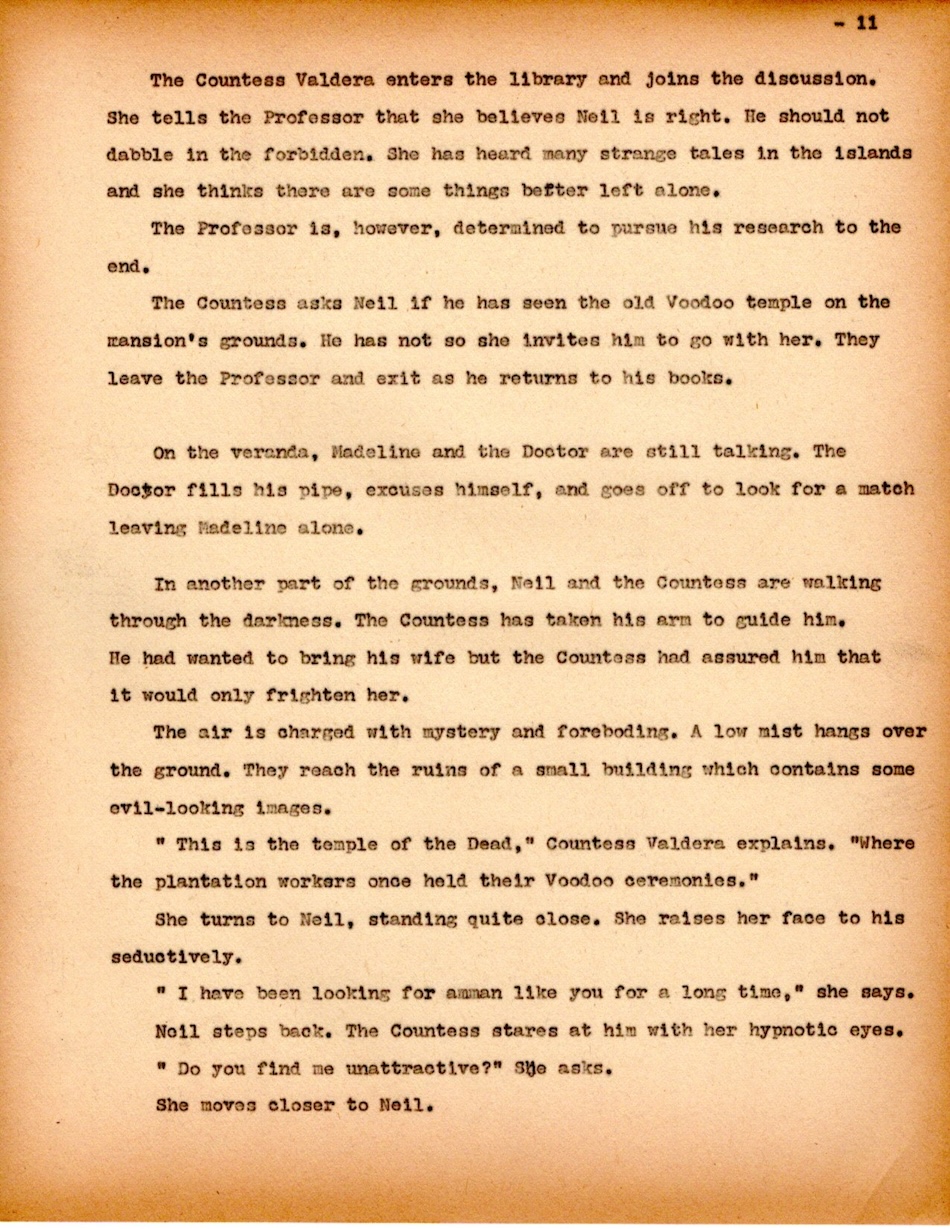
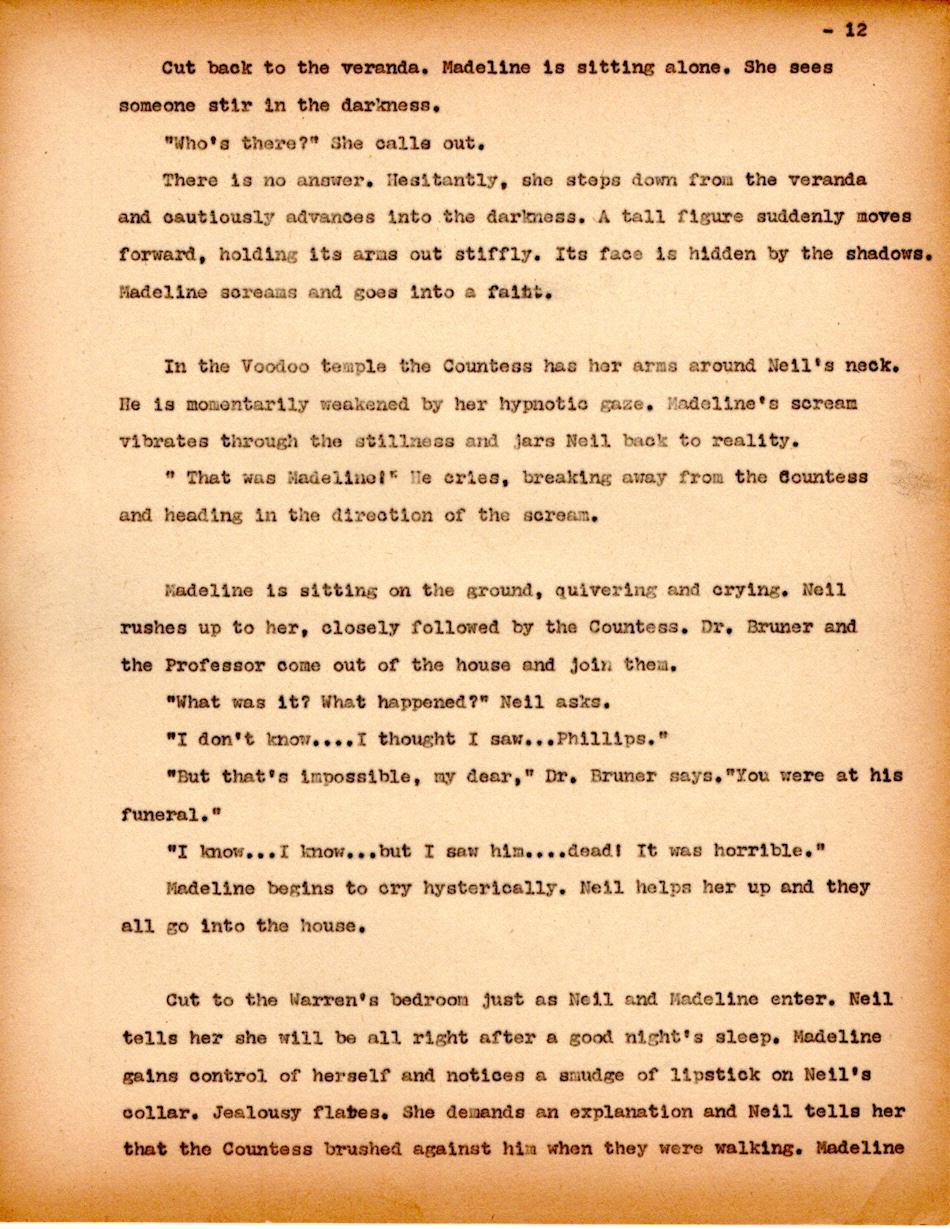
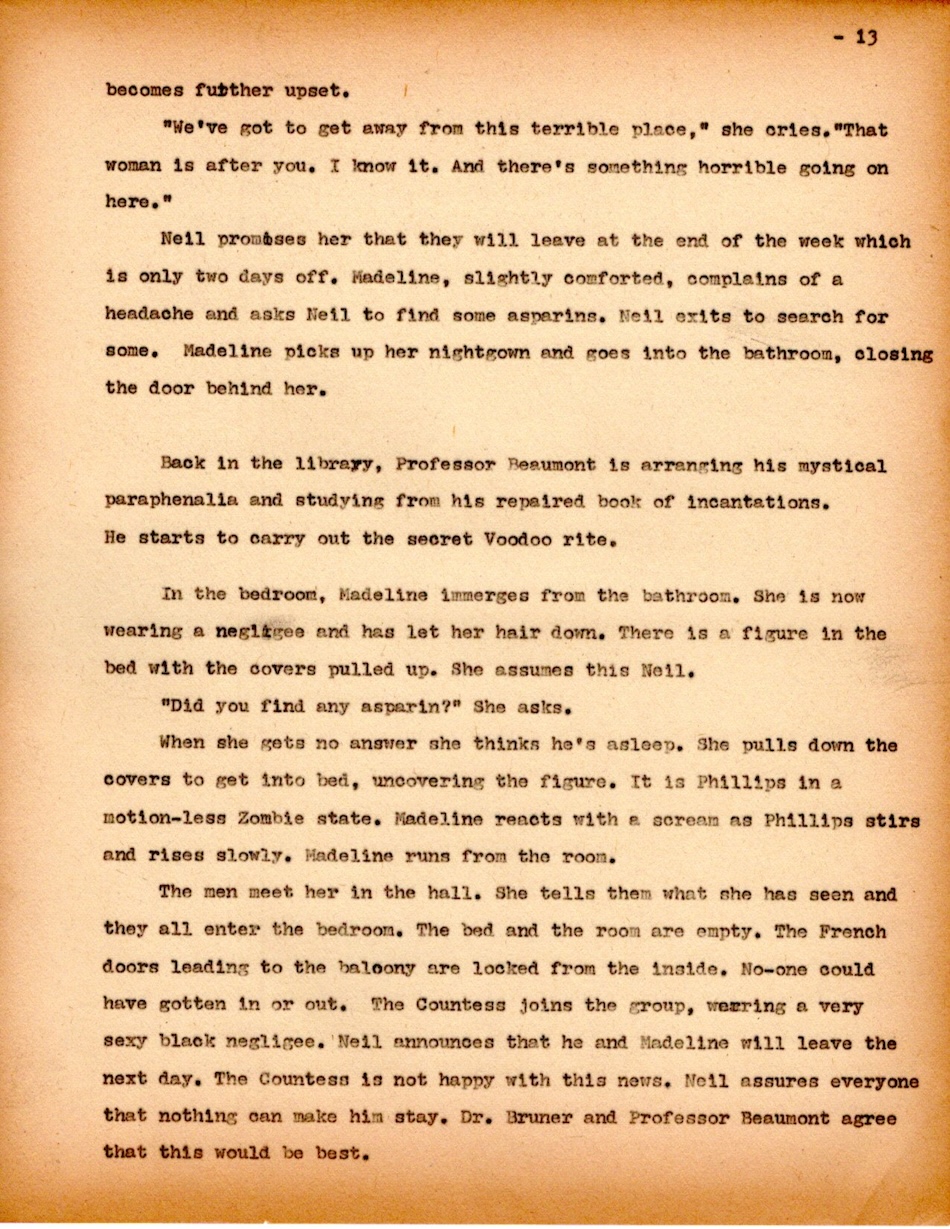
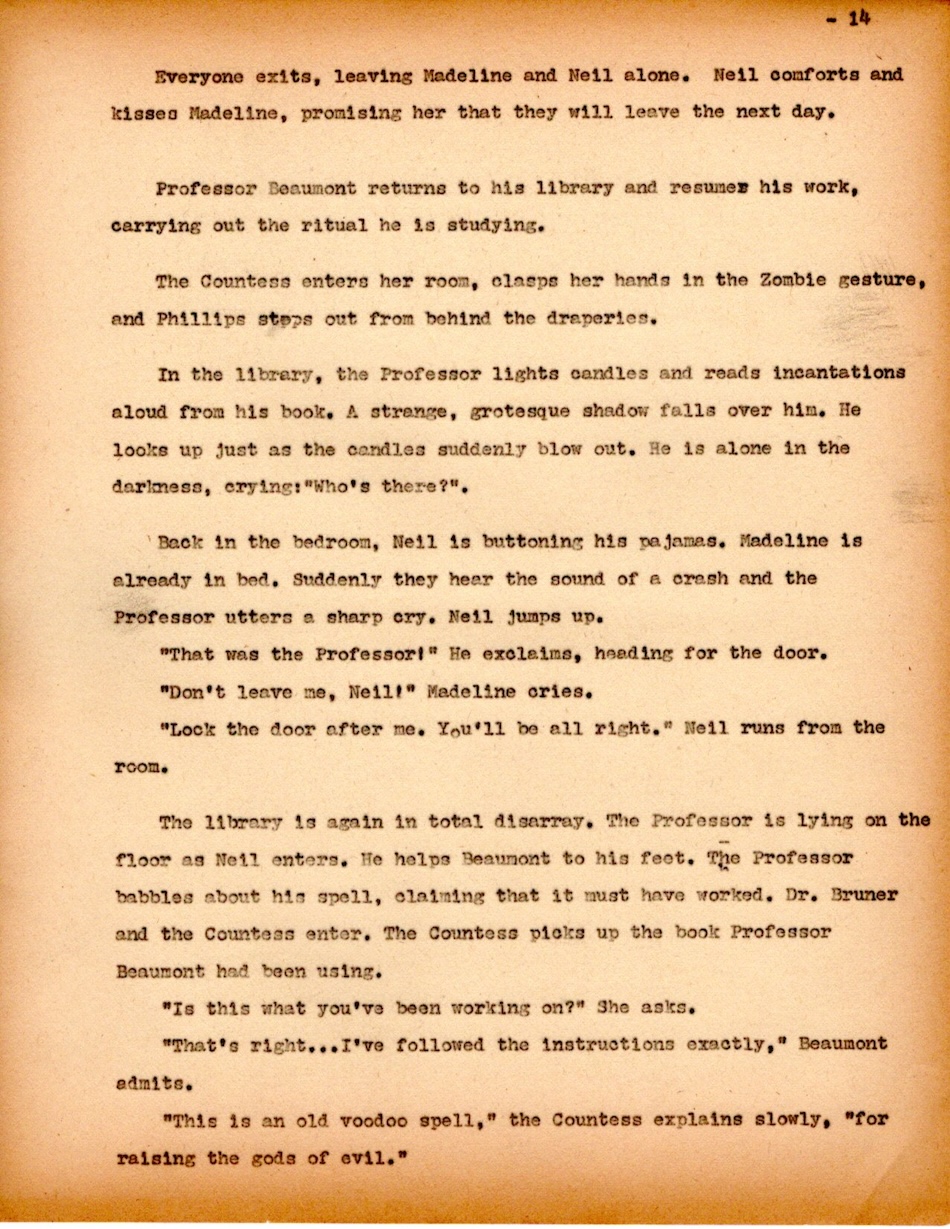
We continue with The World of the Living Dead, John’s 1965 treatment for a remake of the film White Zombie. The Countess is turning up the heat…




We return now to our scary serial, John’s 1965 treatment for a remake of White Zombie. The Countess is not to be trusted!
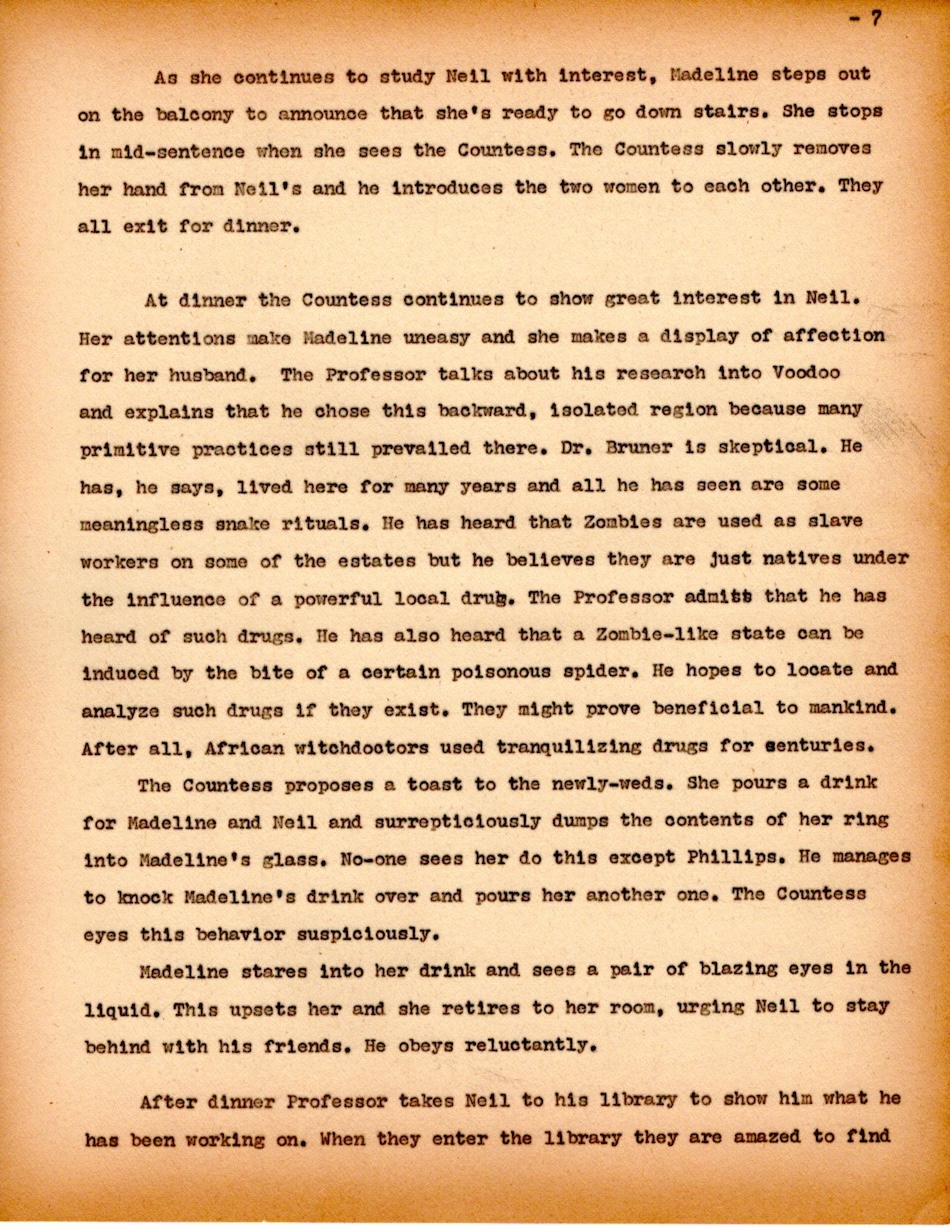
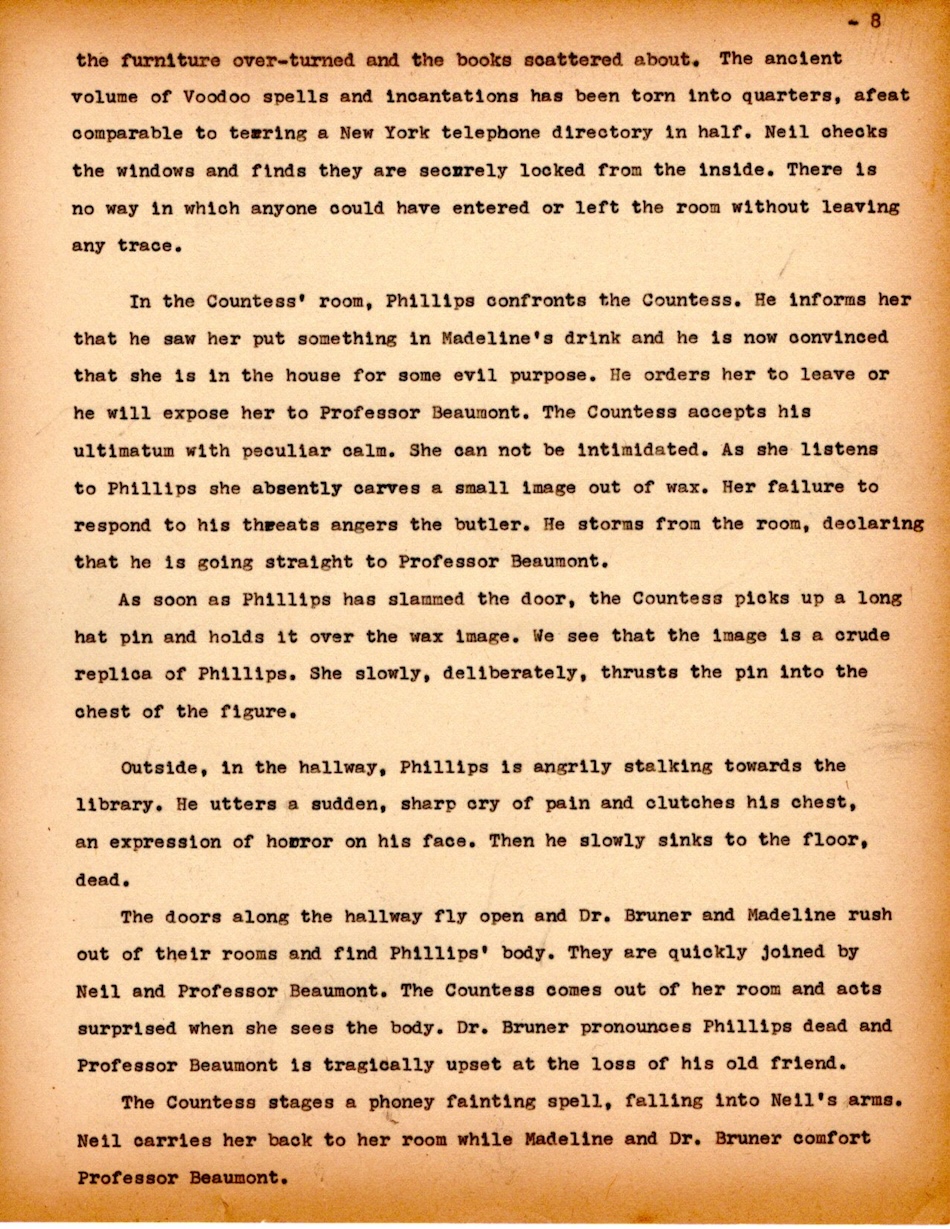
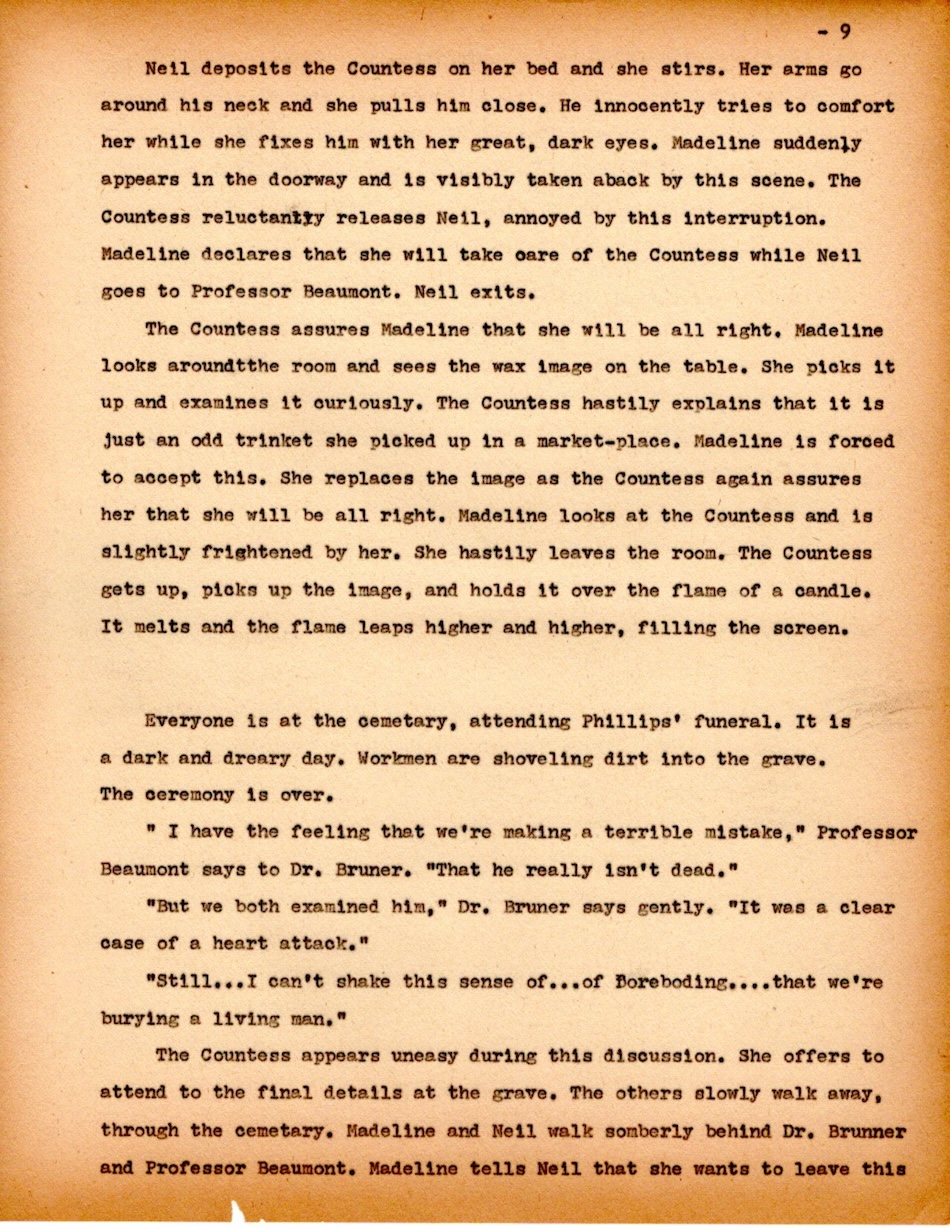
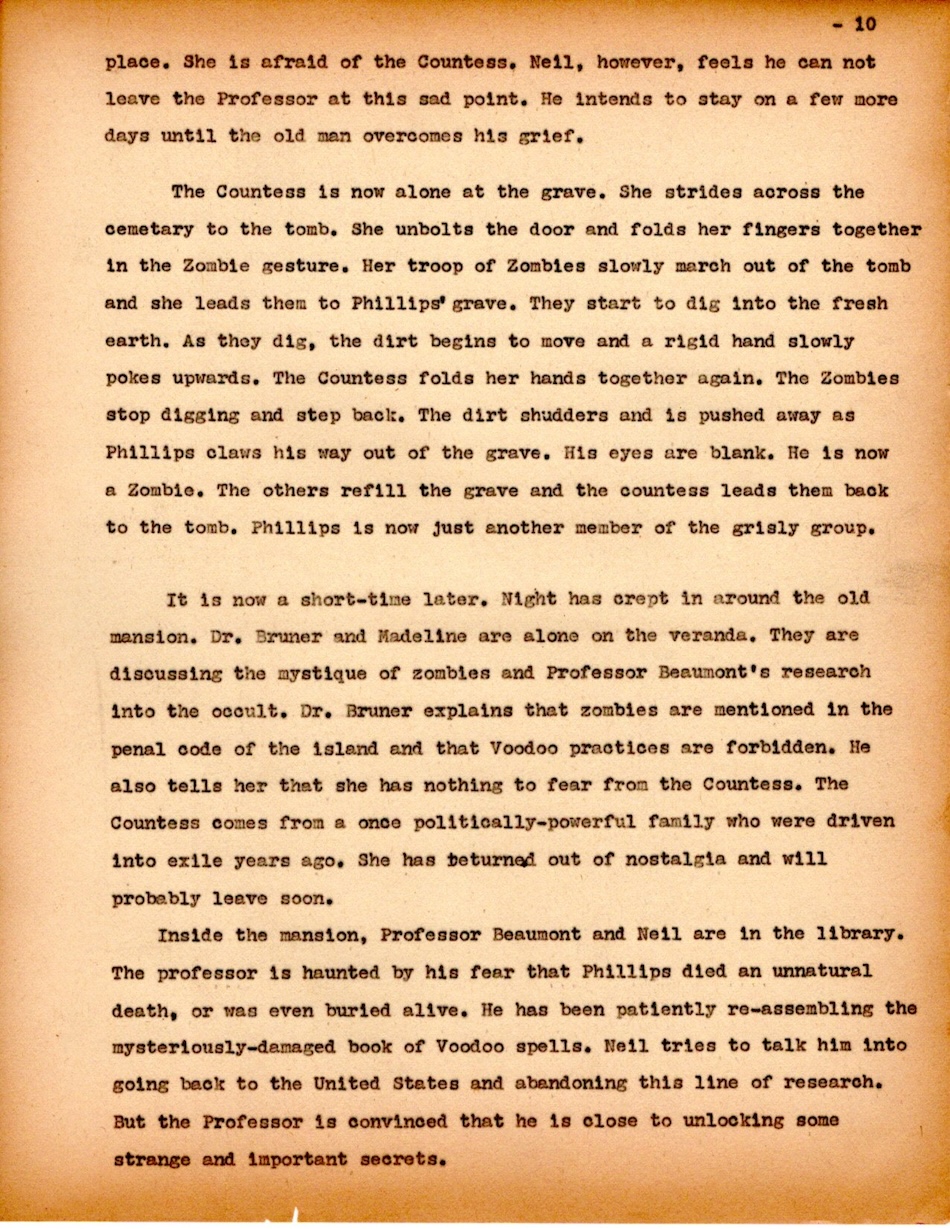
We continue with John’s 1965 treatment for a proposed remake of White Zombie. In this next bit we meet the sinister Countess Valdera. John seems to be having a lot of fun with this assignment.
I’m having some trouble with the comments, but I hope to get everything fixed soon.
ADDENDUM: Everything seems to be working again. Comment away!
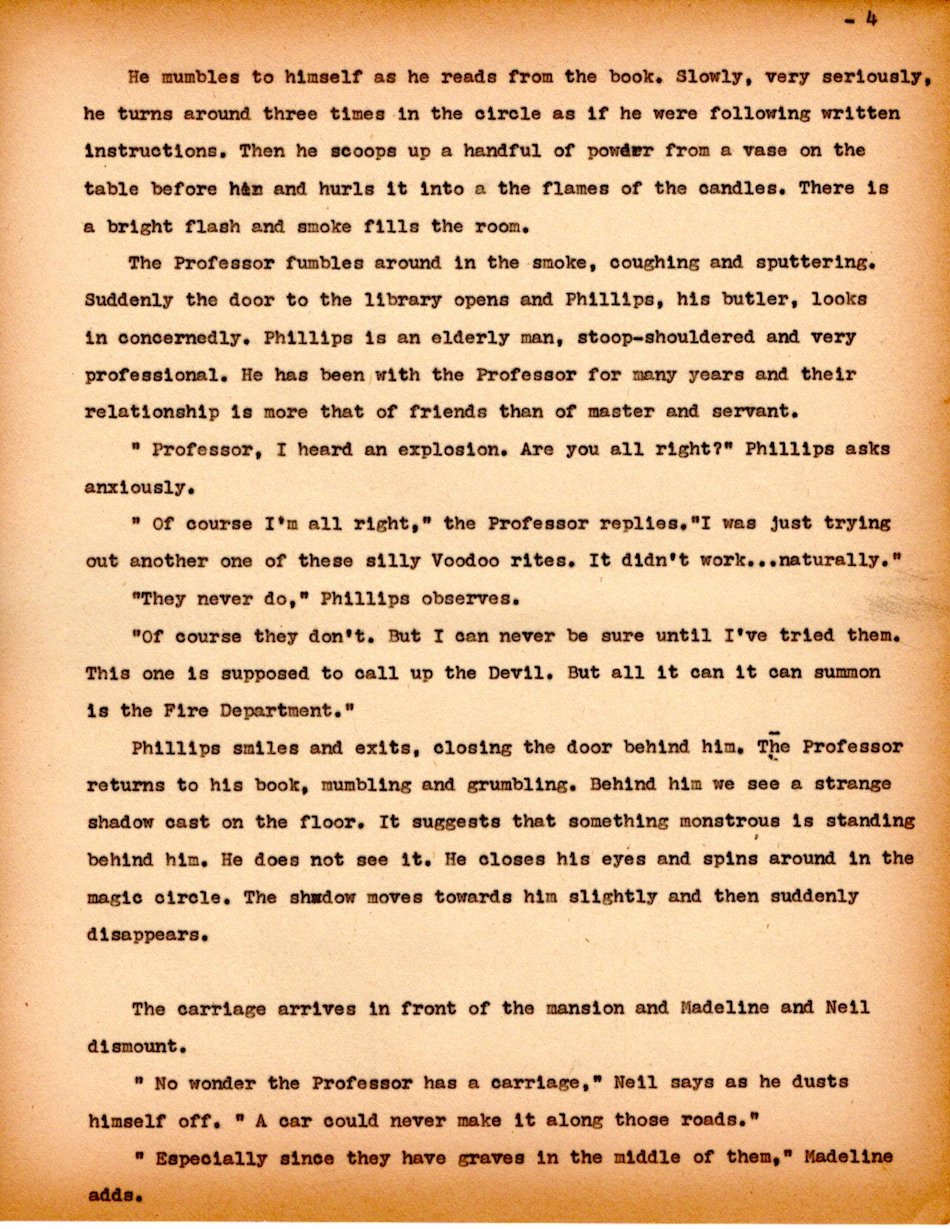
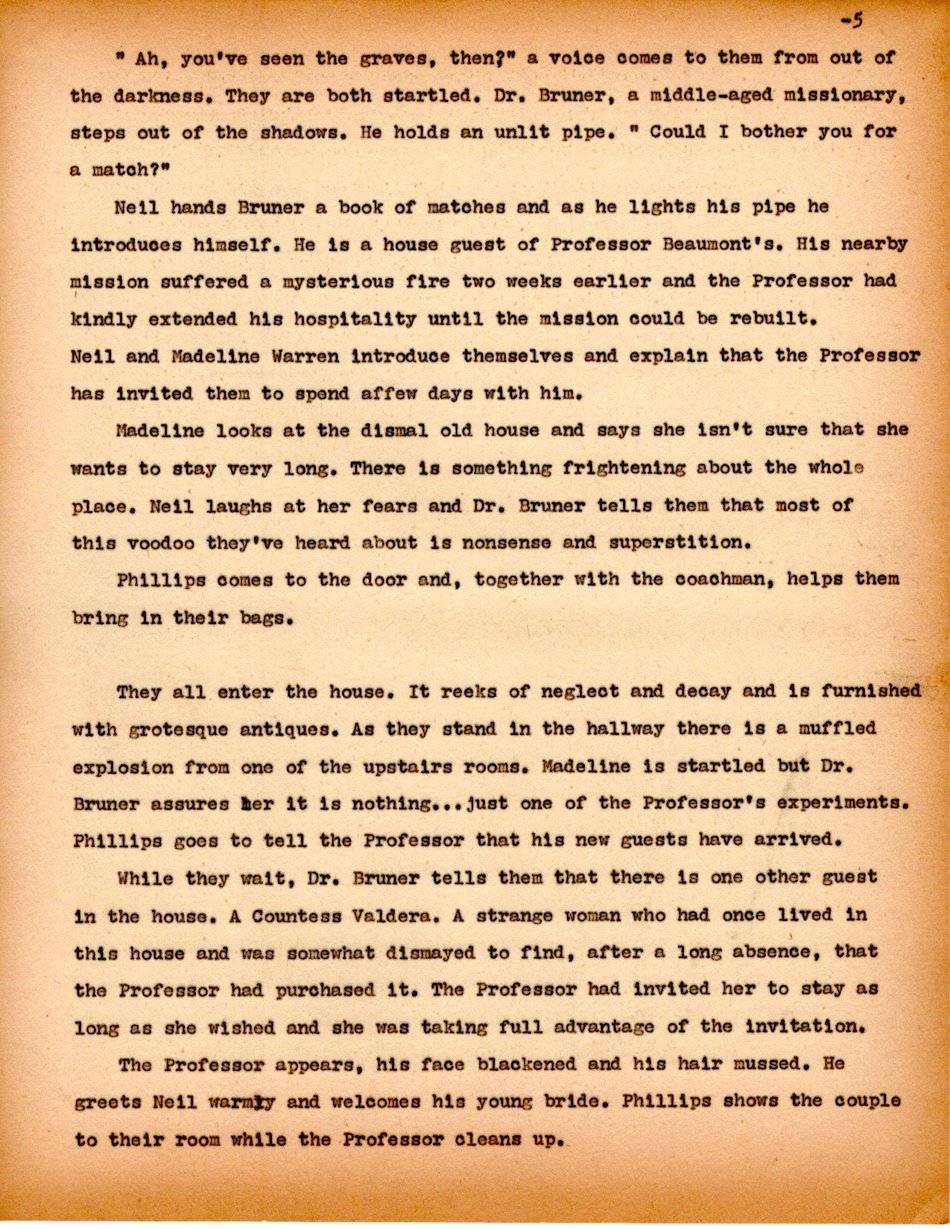
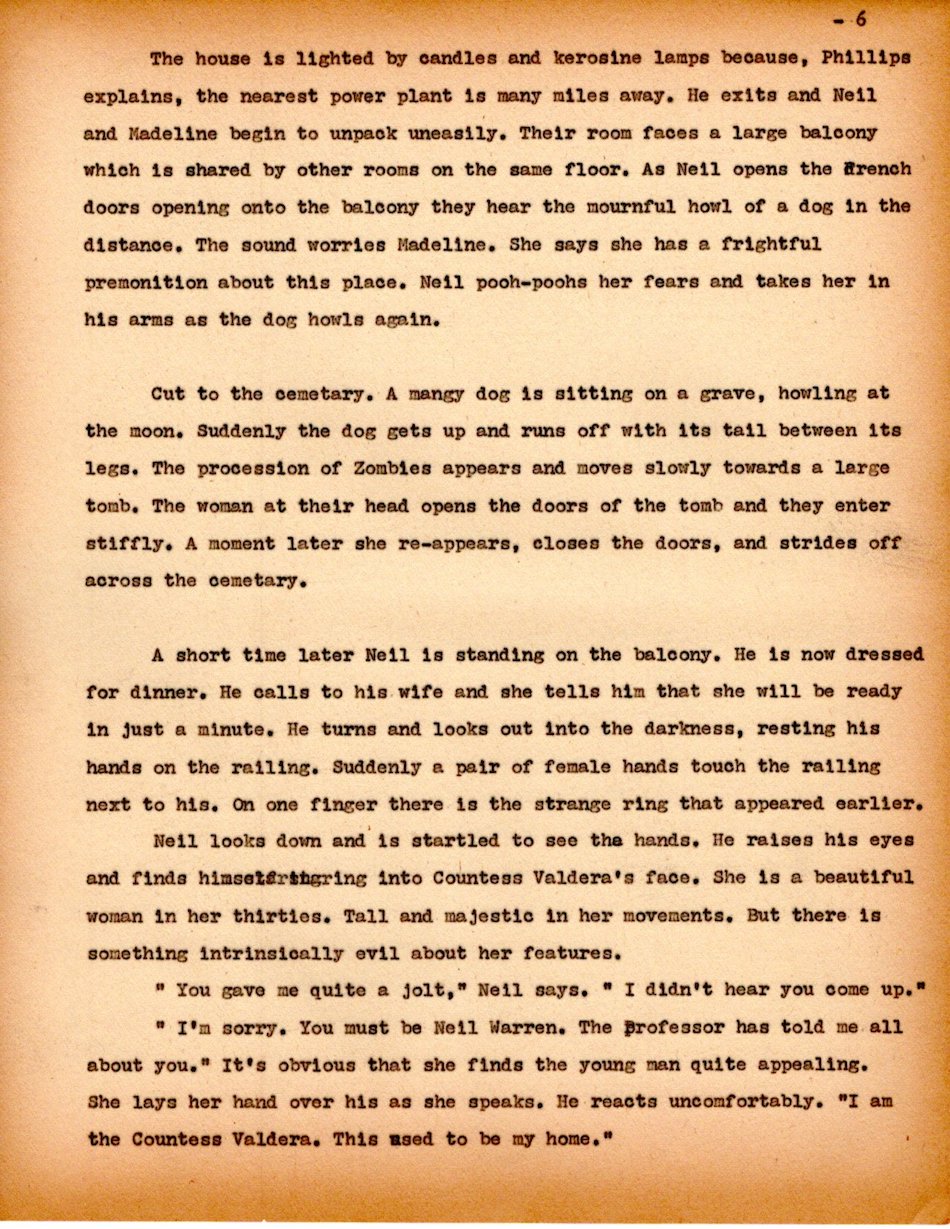
I apologize to Keel fans for not posting in August. I’ve been busy with my own many projects, some Fortean, some not. But I’m back, and here to offer you a definite curiosity: a treatment for a zombie film by John Keel.
In 1965, John was toiling away in NYC as a freelance writer. He had had a spell of writer’s block after the publication of Jadoo, and had not yet started investigating UFOs. One of the jobs he undertook was a treatment for a remake of White Zombie, the 1932 movie starring Bela Lugosi. The rights to it were owned by Sherman S. Krellberg, a film distributor and occasional producer; among other things, he distributed the Hopalong Cassidy films and repackaged Flash Gordon serials. (You can find more about him in this description of his papers at the Library of Congress).
The film was never made, but here’s John’s idea of what it could have been.
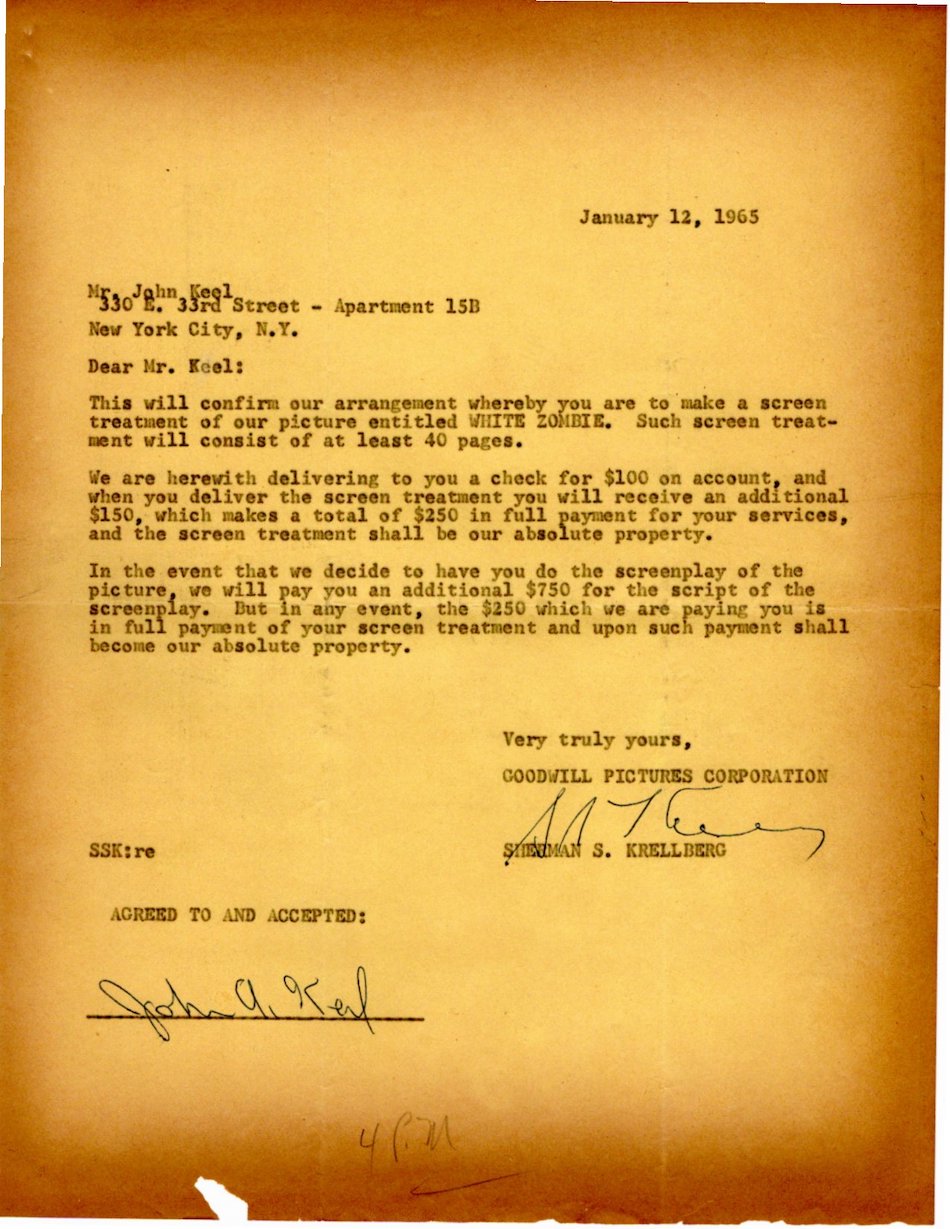
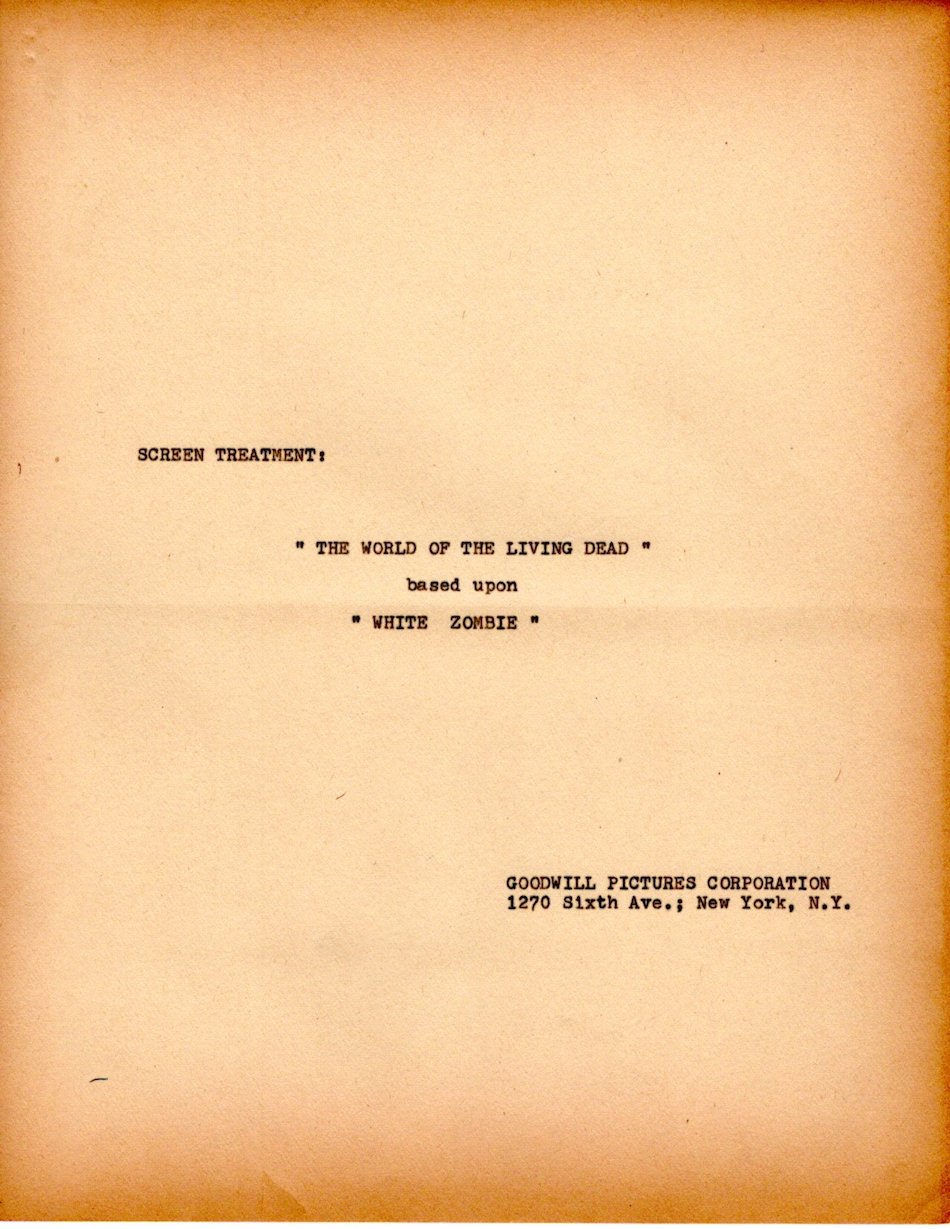
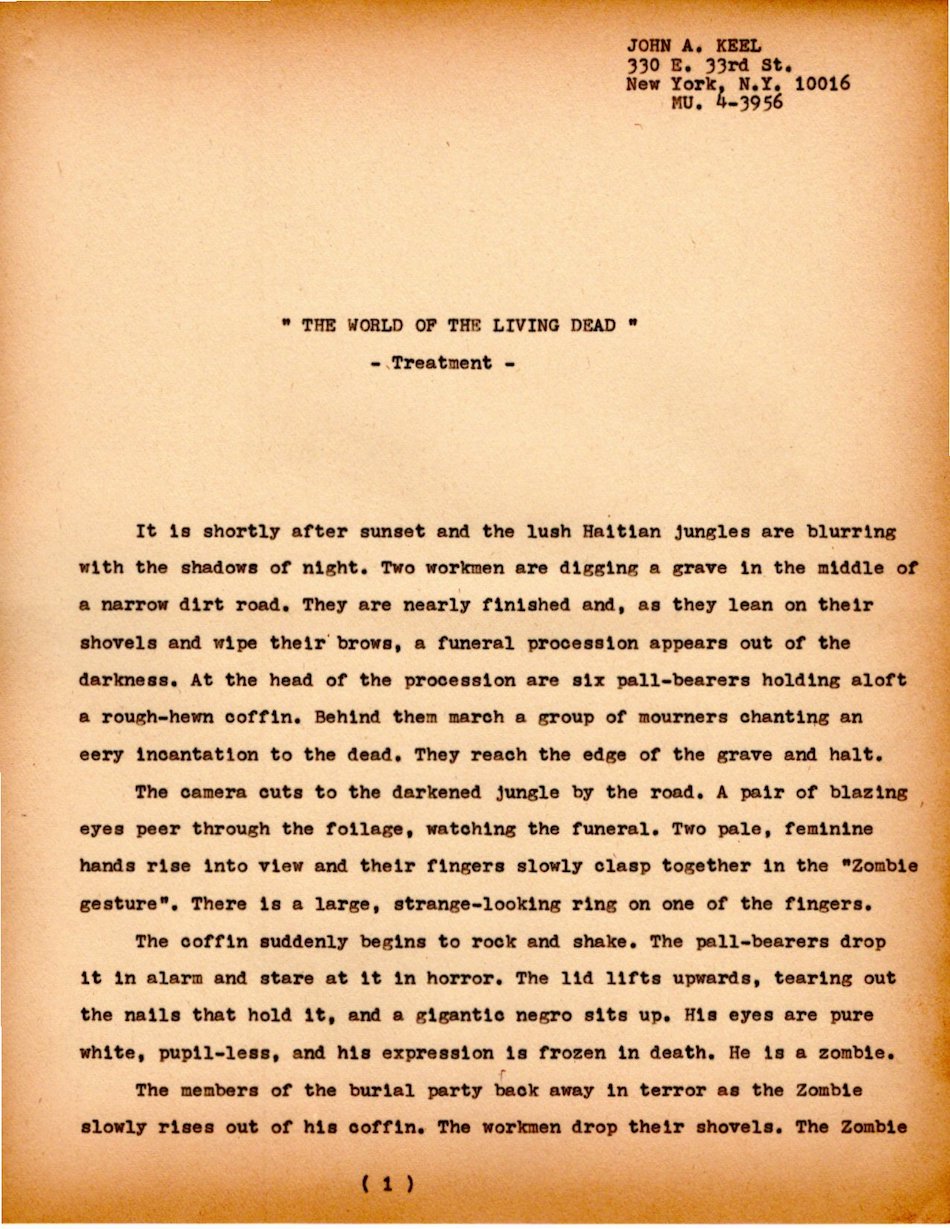
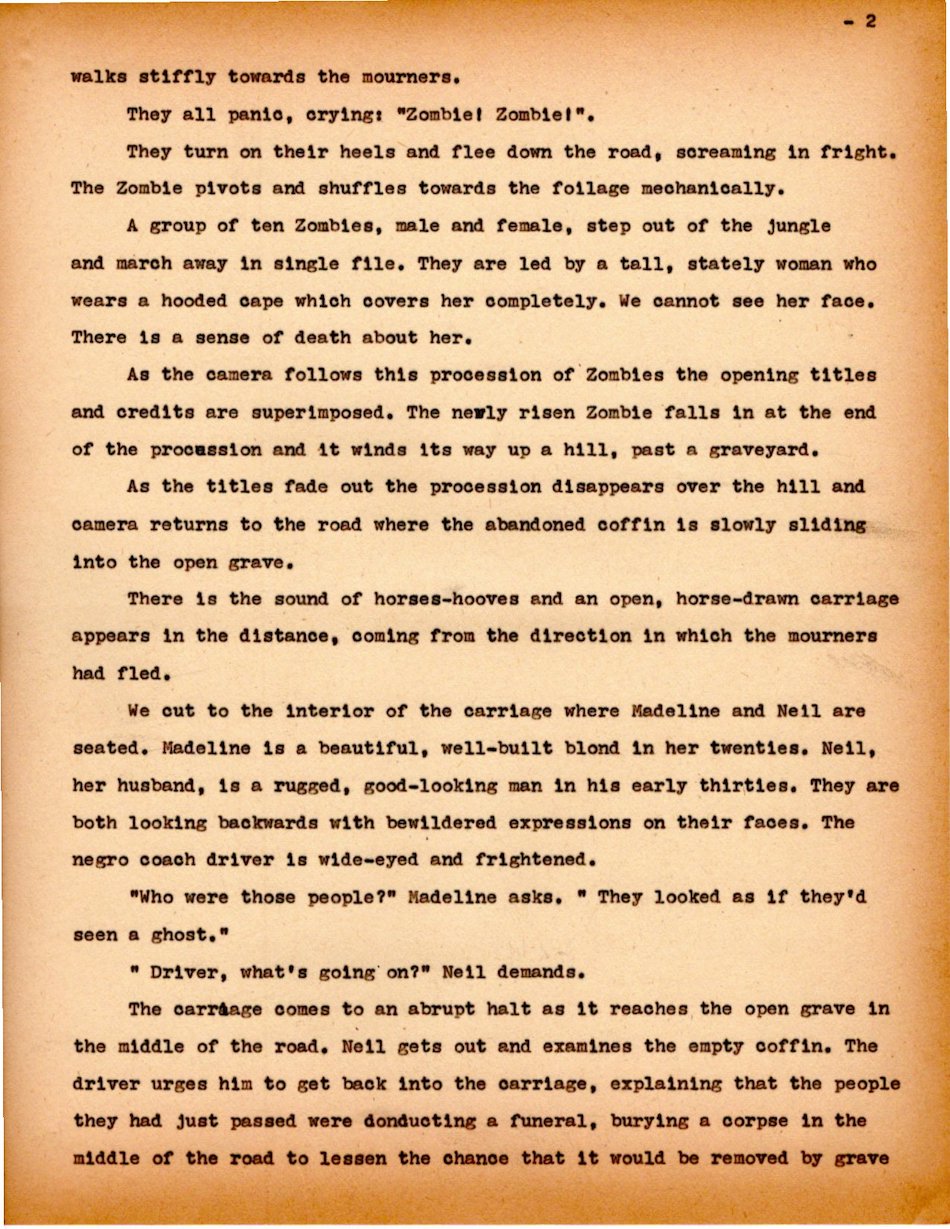
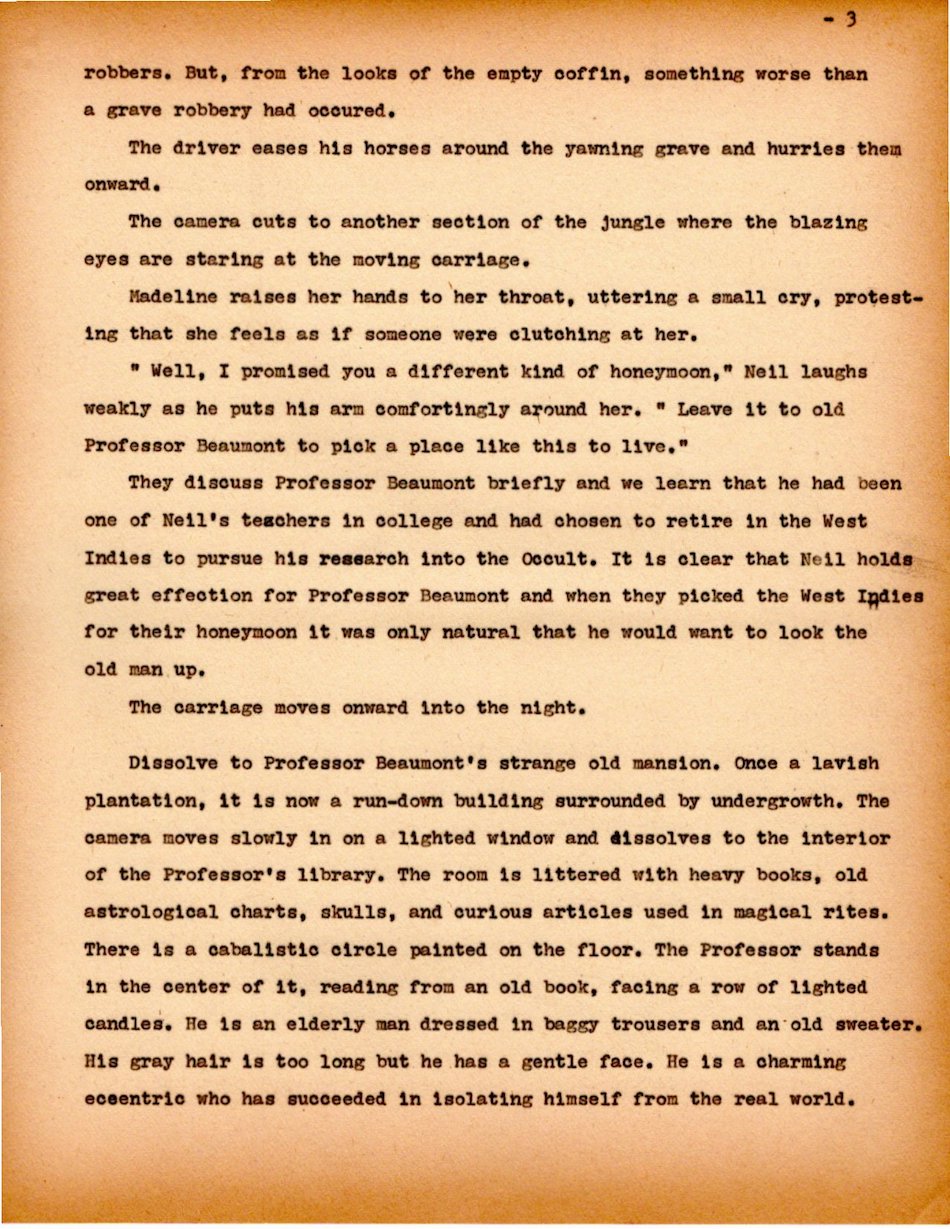
And here’s the ending of John’s early story, “The End of the Hunt.”
(A personal note: I apologize for posting less frequently recently. I’ve been busy!)

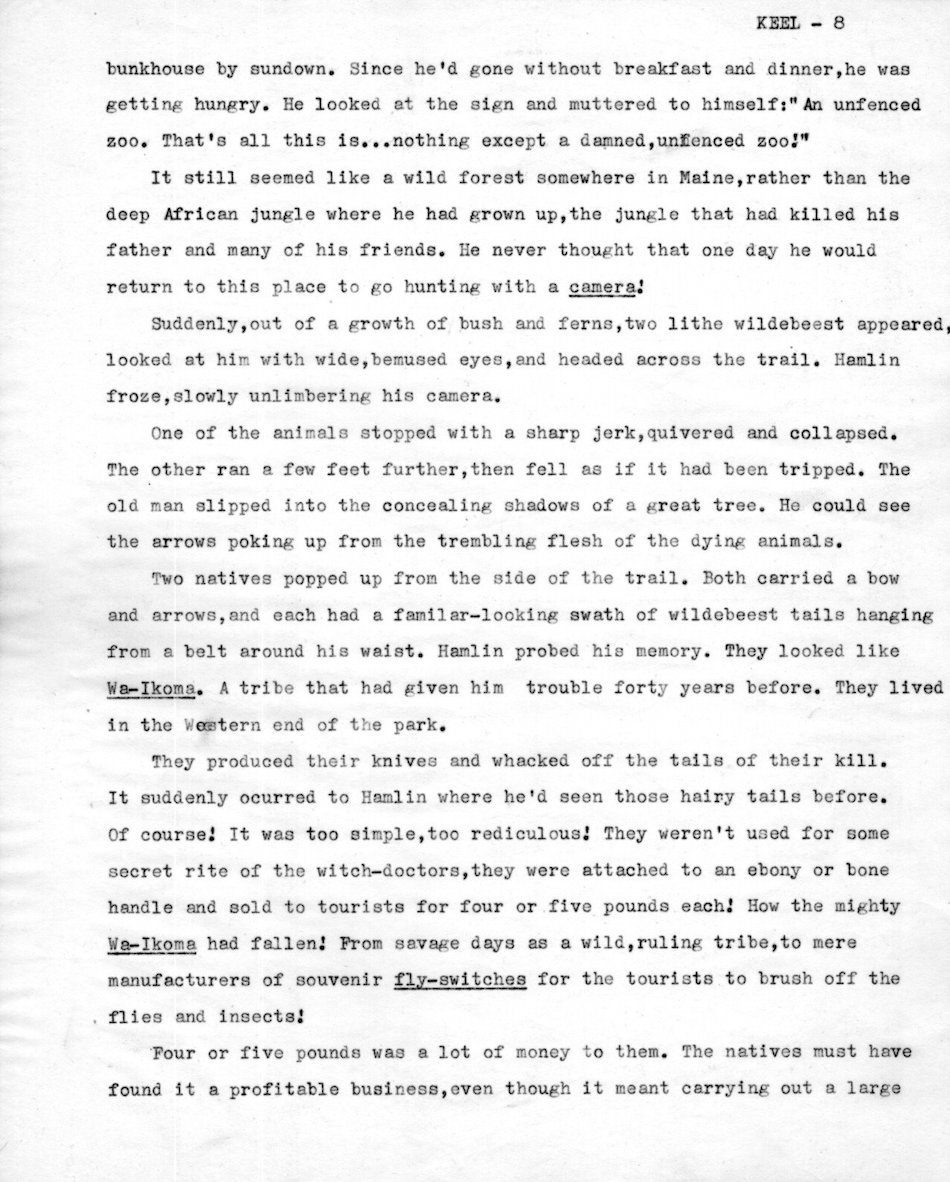
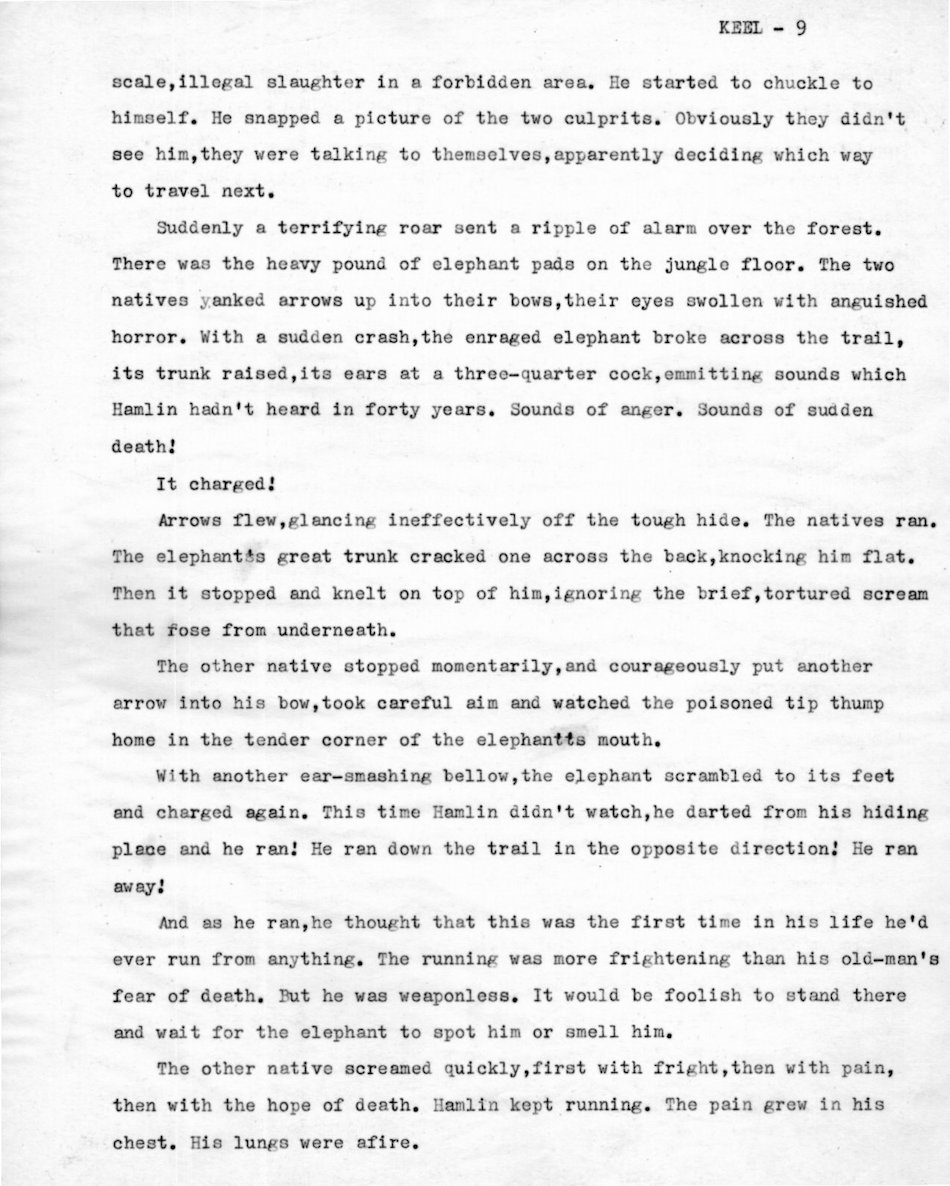
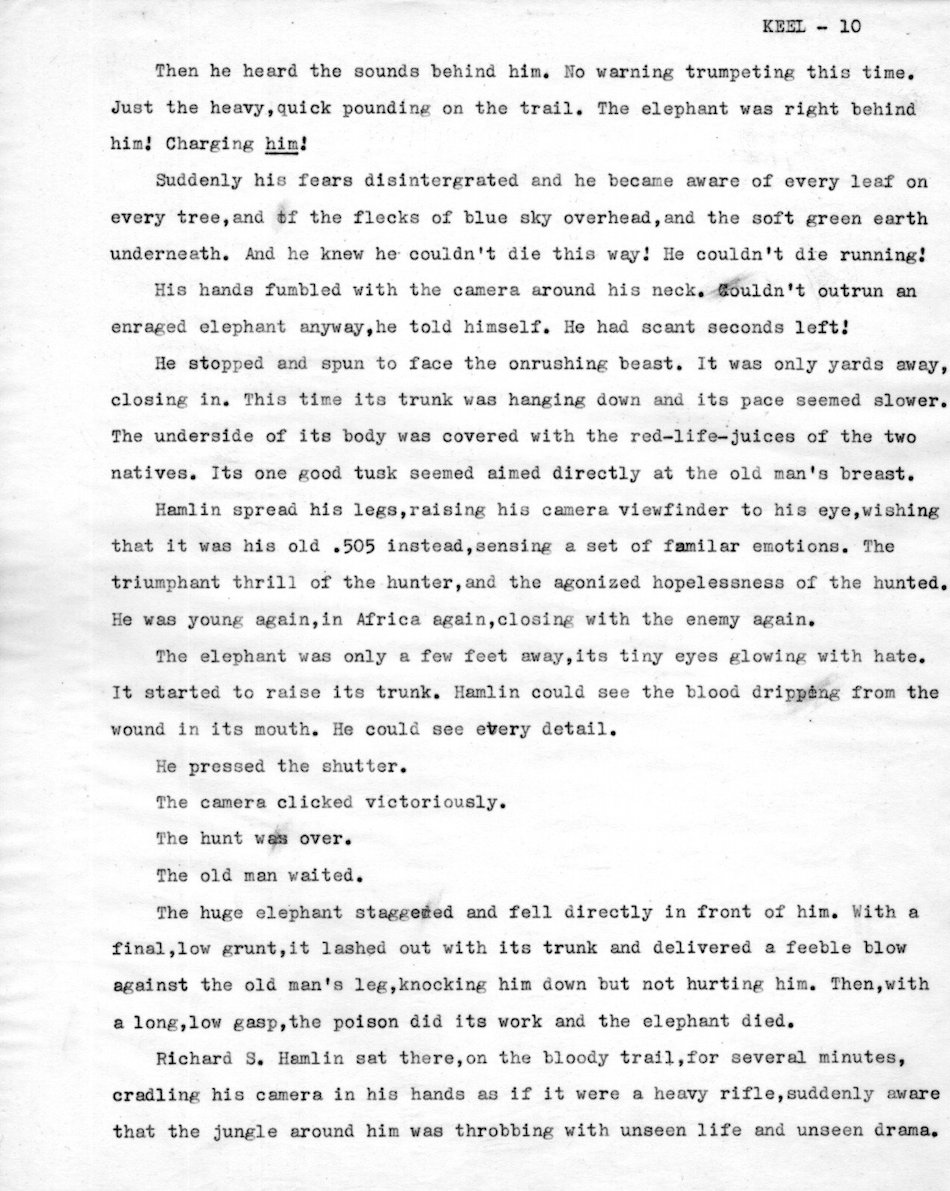
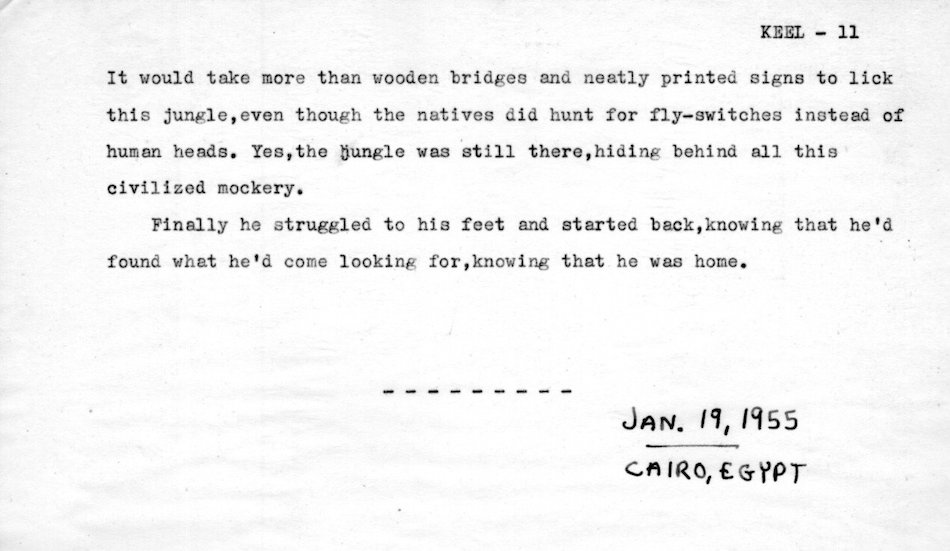
Here’s the second part of John’s story “End of the Hunt,” the second story he wrote for the men’s magazine market back in 1955, and the first he was able to sell. Next: the thrilling conclusion!
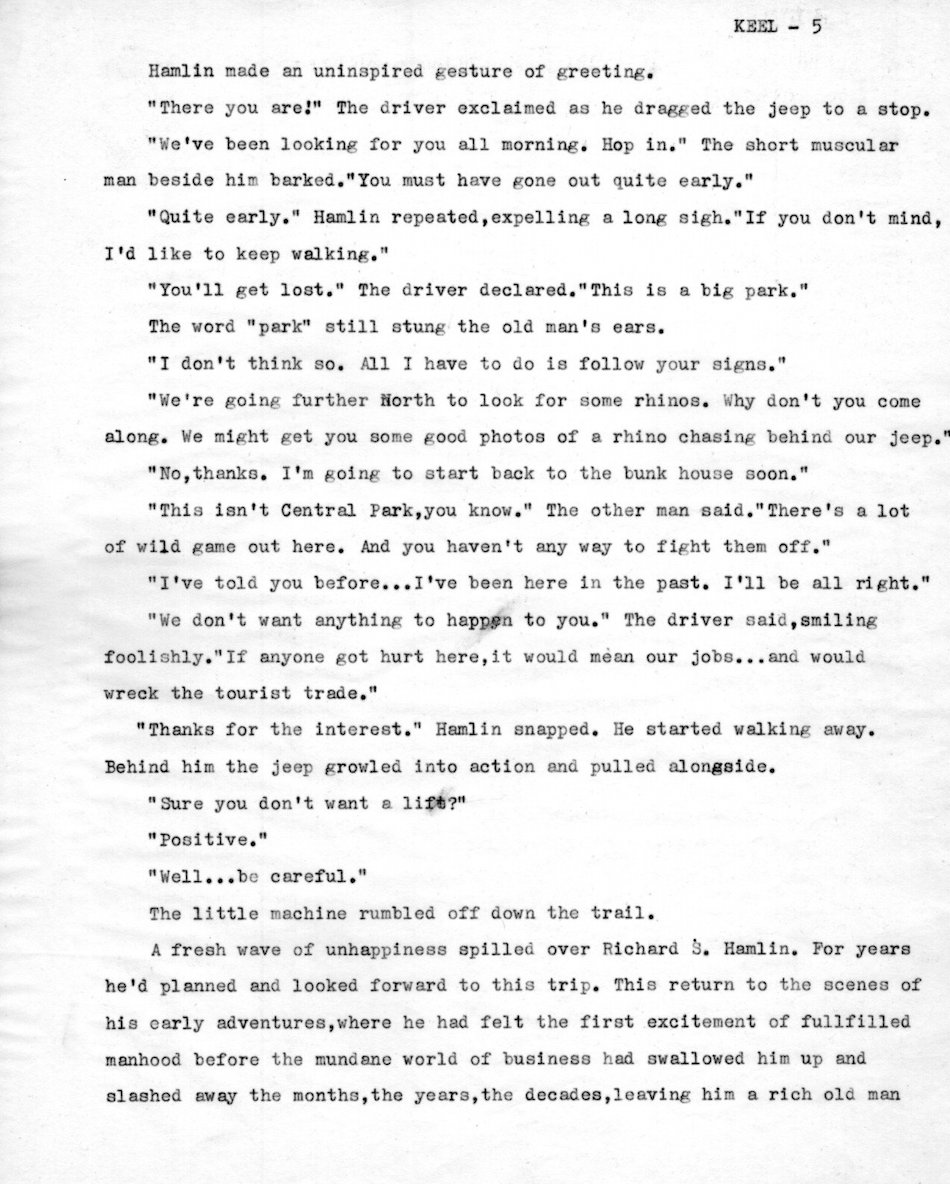
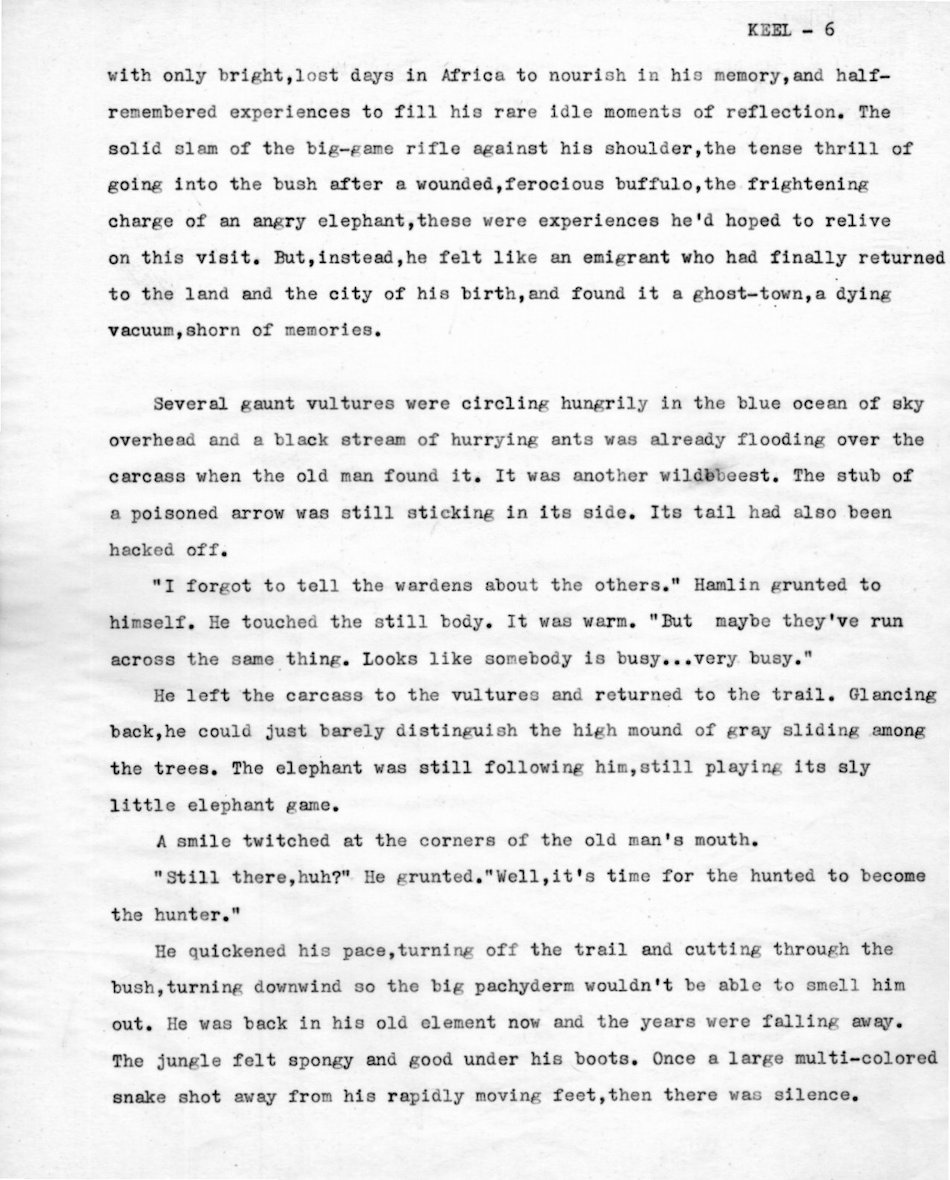
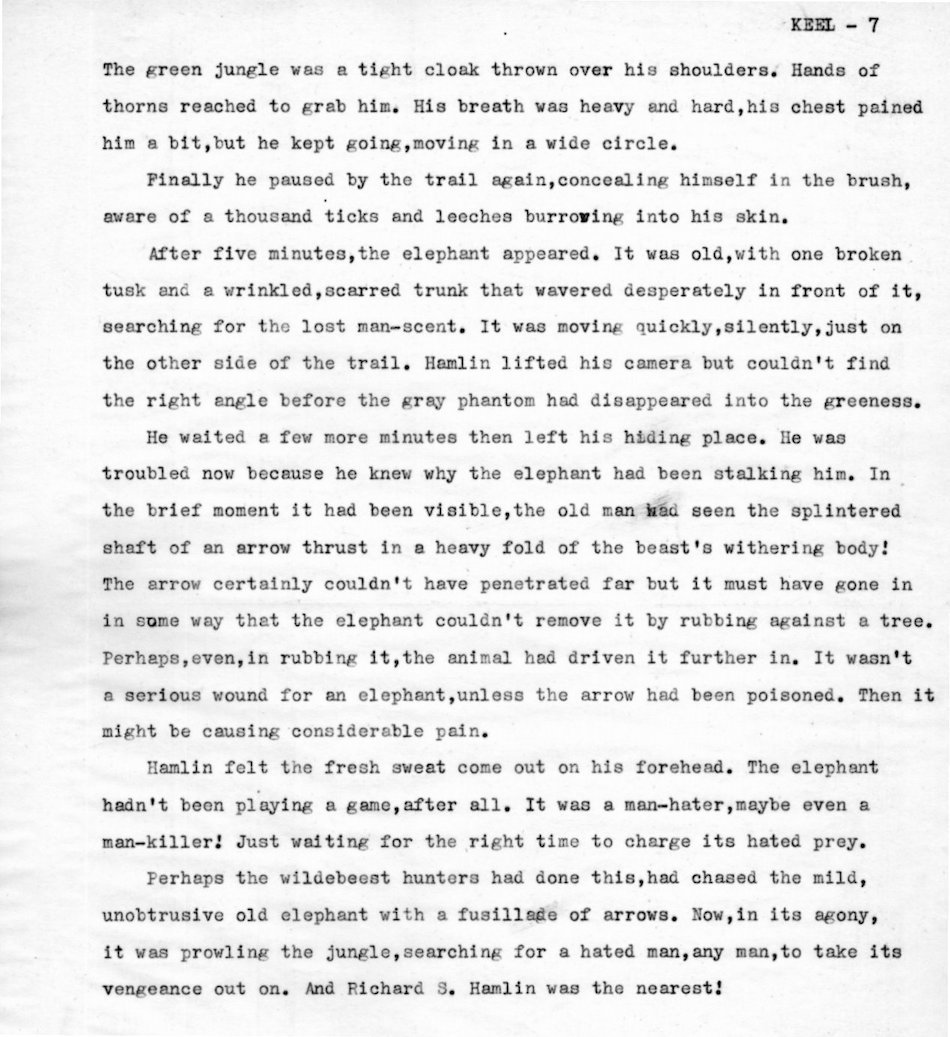
John died on July 3, 2009, in NYC. I mark the occasion by posting an unfamiliar picture of him. Here he is in Barcelona in 1956, at Christmas, taking a break from writing Jadoo. Rest in peace, John! We’re still reading your books!
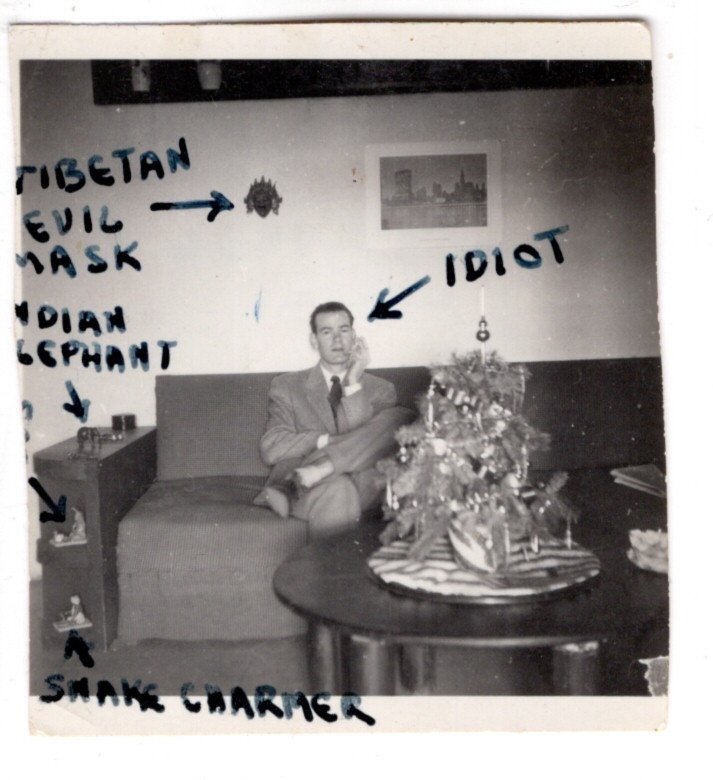
In 1955, John left the army and started wandering through the Middle East. He was badly in need of money, and so he also started sending articles to his agent in the US, Alex Jackinson, to sell to men’s adventure magazines. He carefully kept all of his submissions, with notes on sales and rejections. His first attempt, “Creeping Death of the Nile,” was abandoned, but he had better luck with the second, “End of the Hunt,” which sold to Sport Life. Here, then, is the first installment of John’s first sale to the men’s magazine market. He was not, by the way, “somewhere in Africa,” and certainly not in Tanganyika, but typing away in a hotel in Cairo.
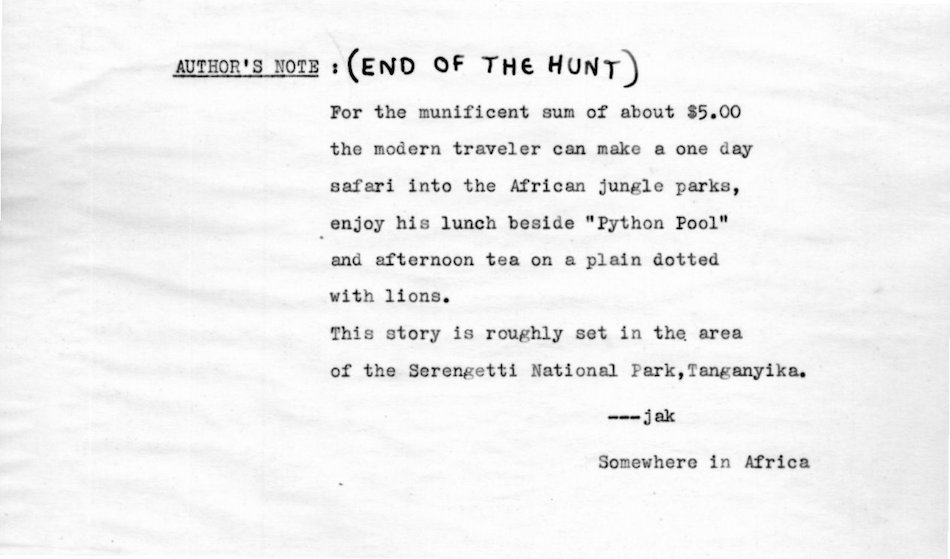
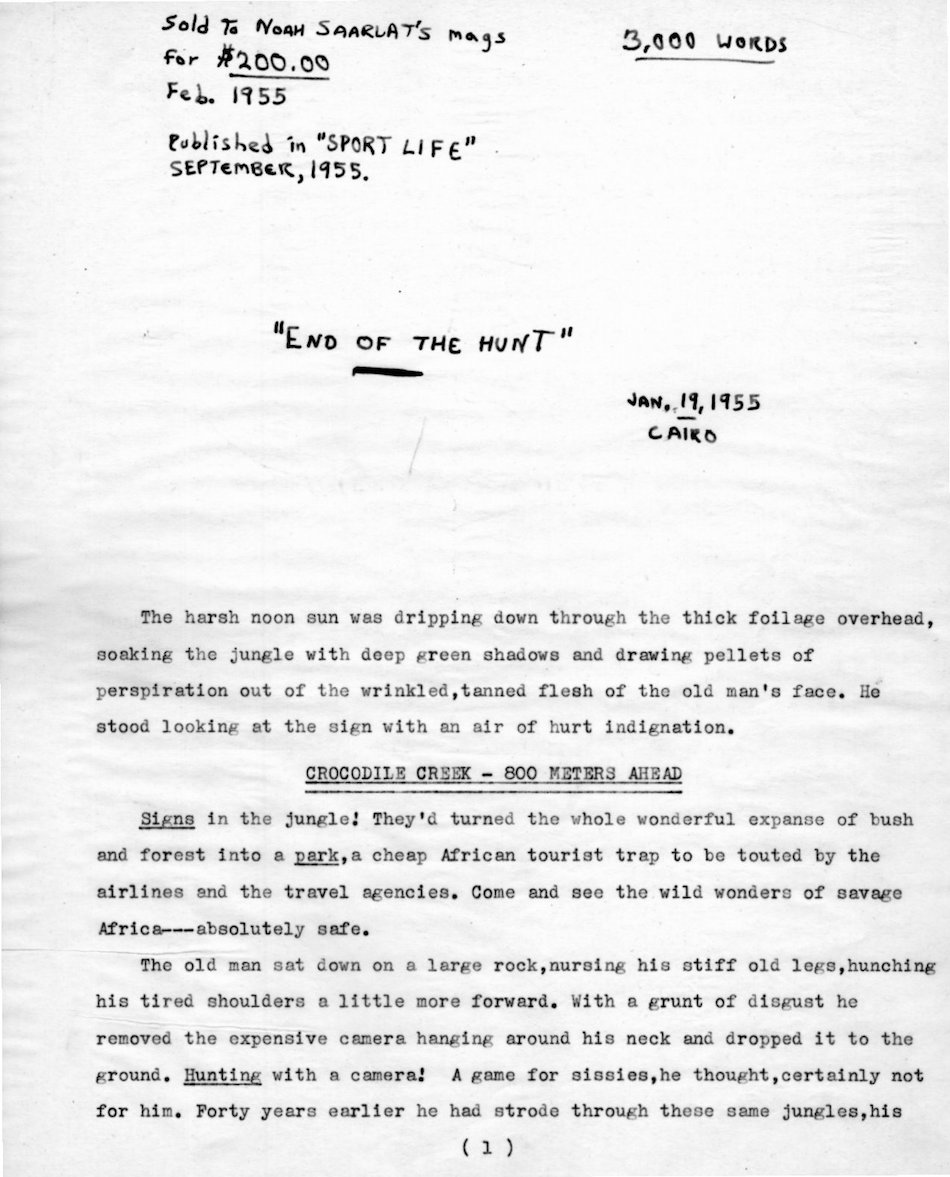
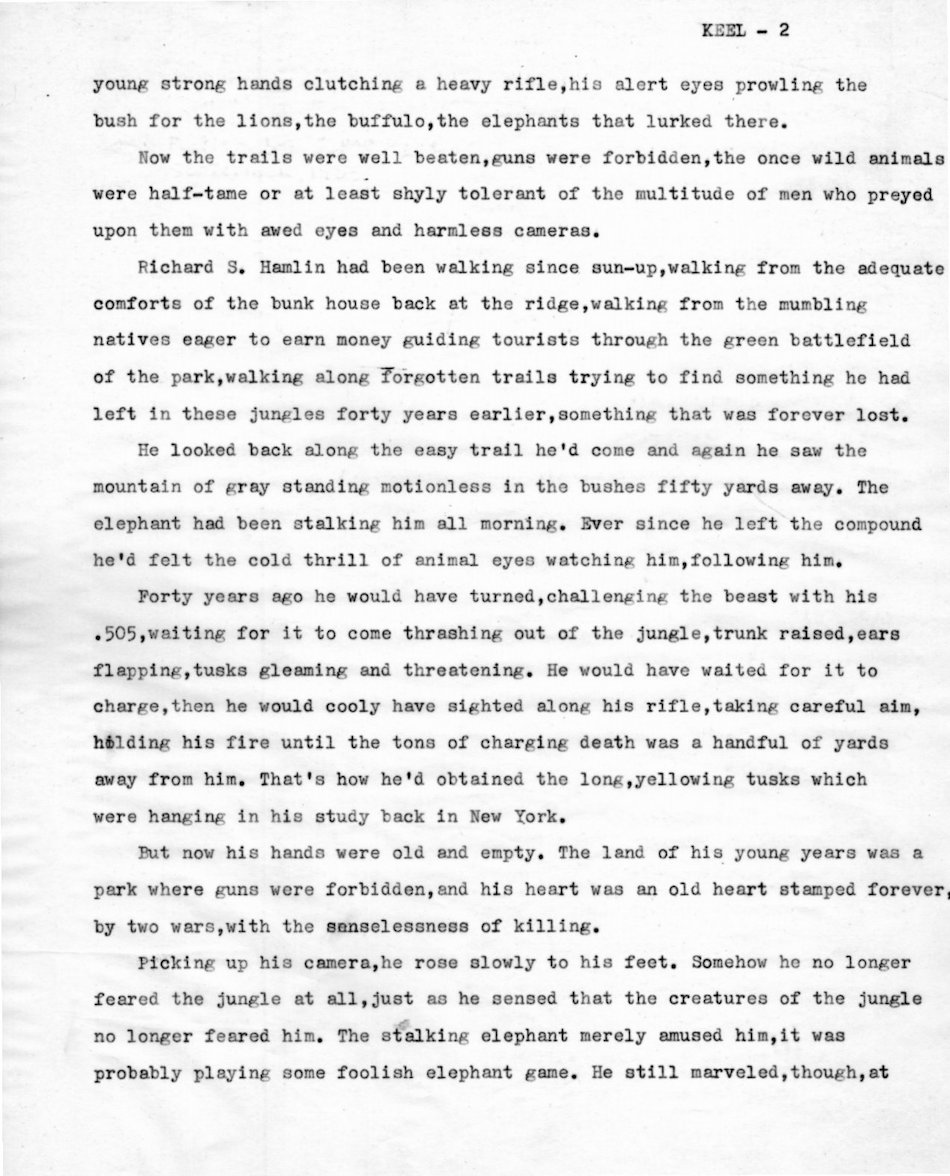
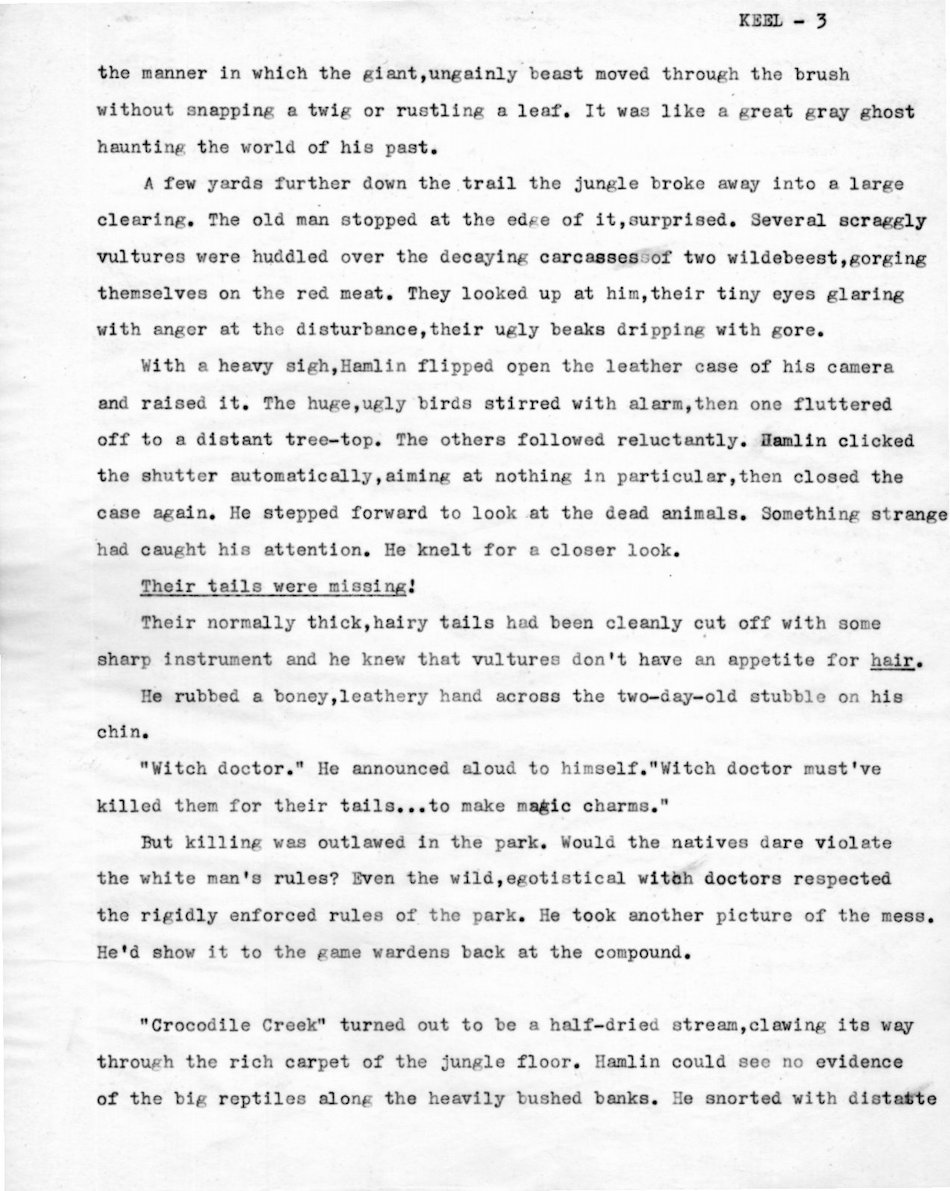
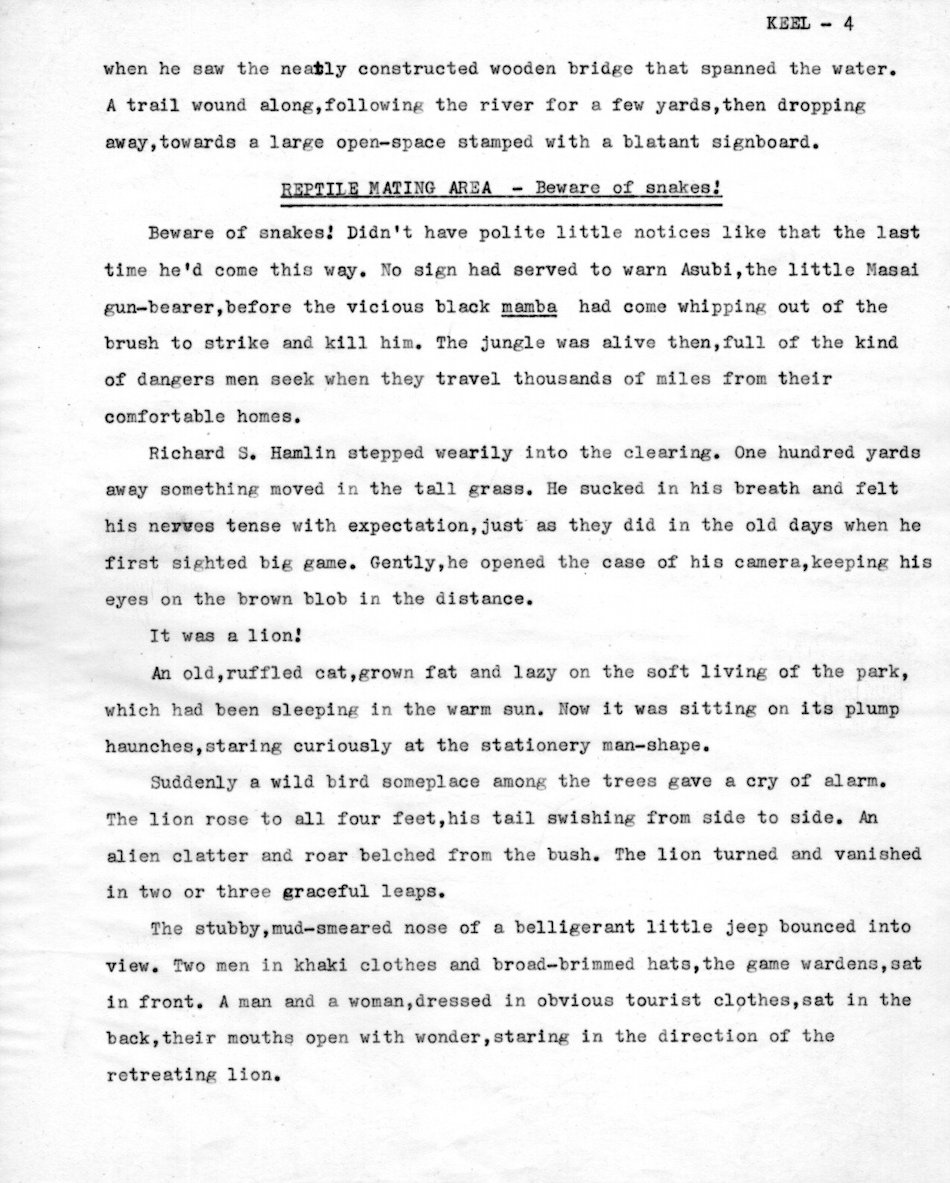
John writes a letter home, a few months after he’d left and hitchhiked to Greenwich Village to seek fame and fortune as a writer. He was 18 at the time. He notes Truman’s surprising election, and mentions work on a script and a novel. The script was for WJZ-TV, which had started broadcasting only a few months before. The novel was West of Washington Square, which he later told me was thrown out by his landlord. (He mentions it in this bio from that year.) And, like any teenager, he’s been quarreling with his girlfriend.
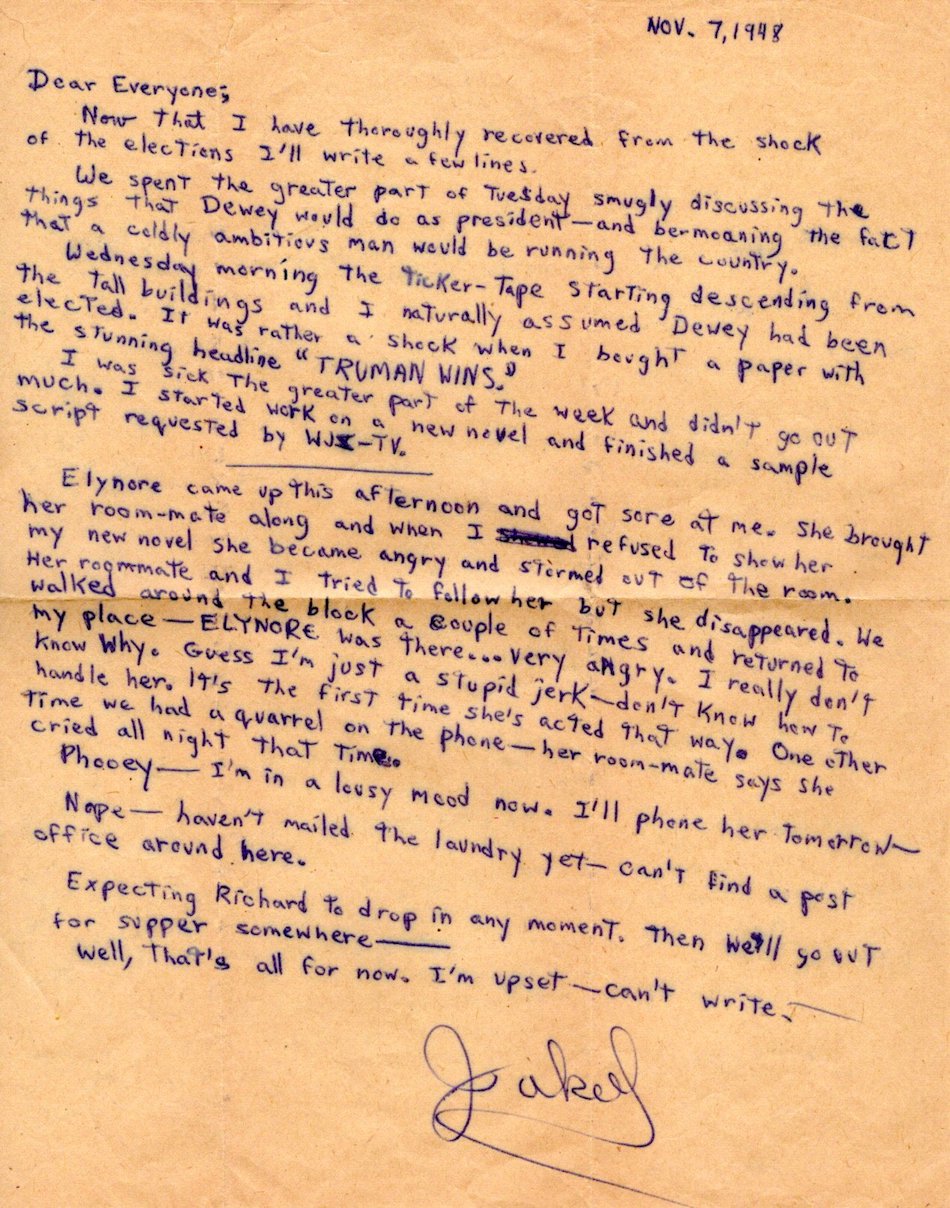
These last pages bring us to the end of John’s “Mothman Casebook,” his file of his early articles on Point Pleasant. (Here’s the overview.) To be noted: John Love, who gets the final word here, didn’t make it into The Mothman Prophecies; nor did four of the pilots–Eddie Adkins, Henry Upton, Leo Edwards, and Ernie Thompson.
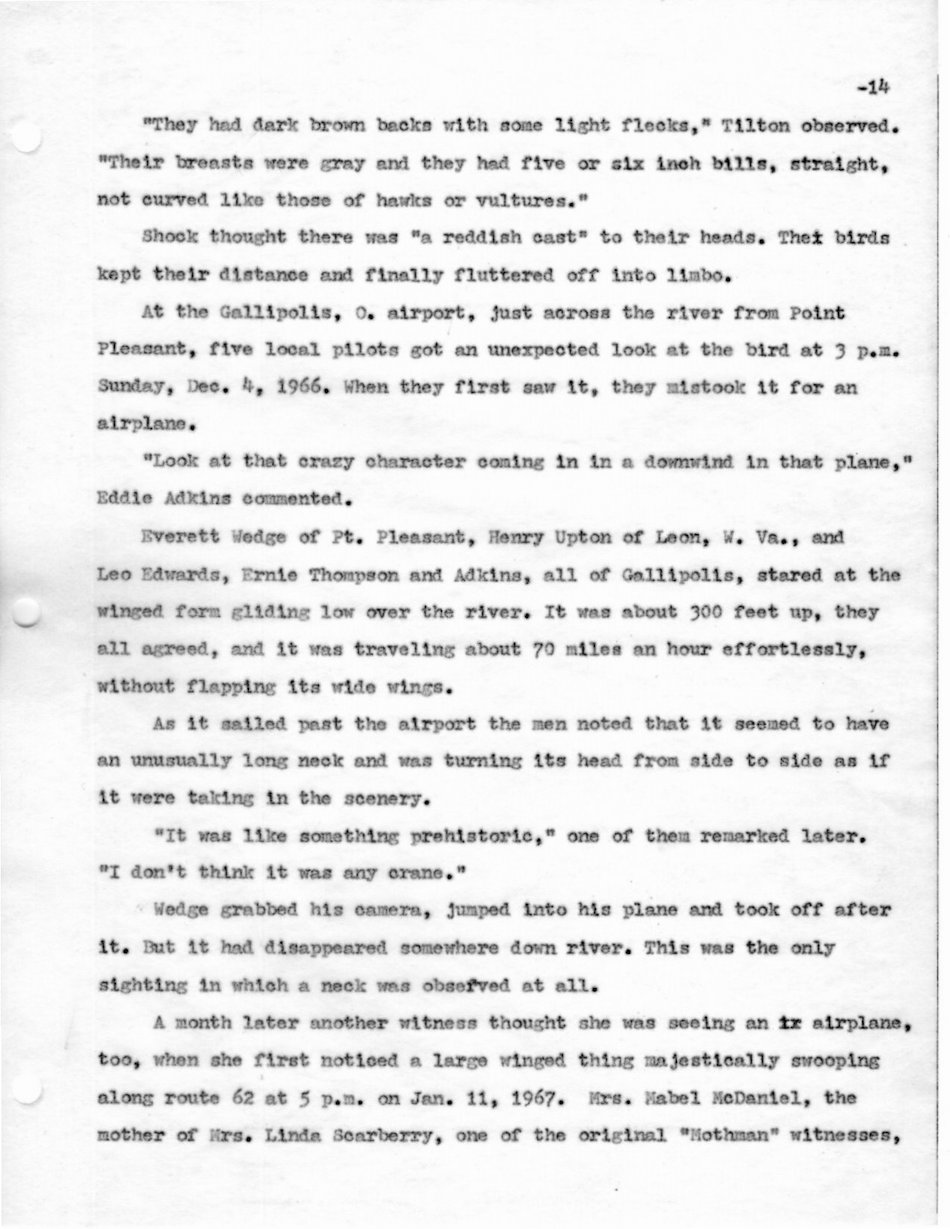
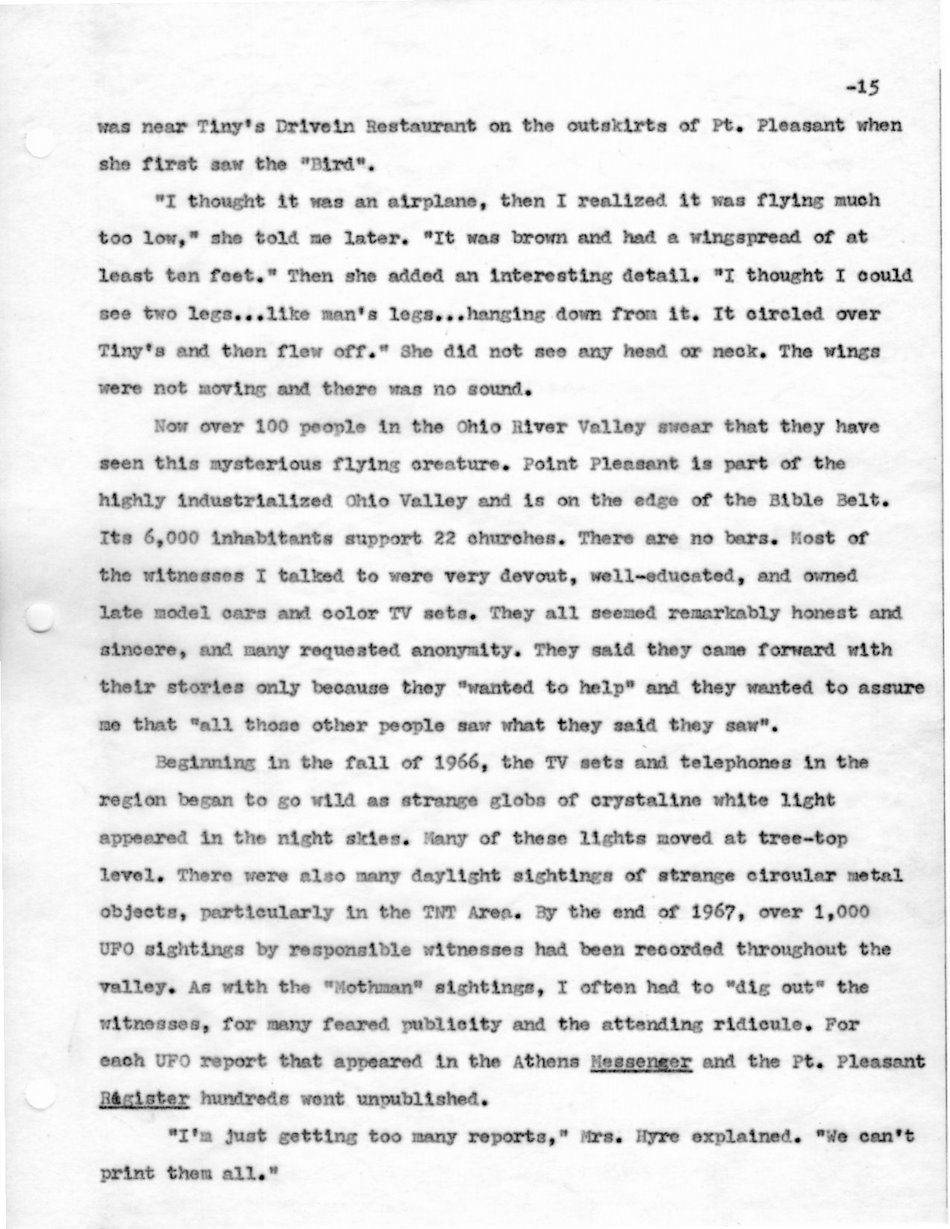
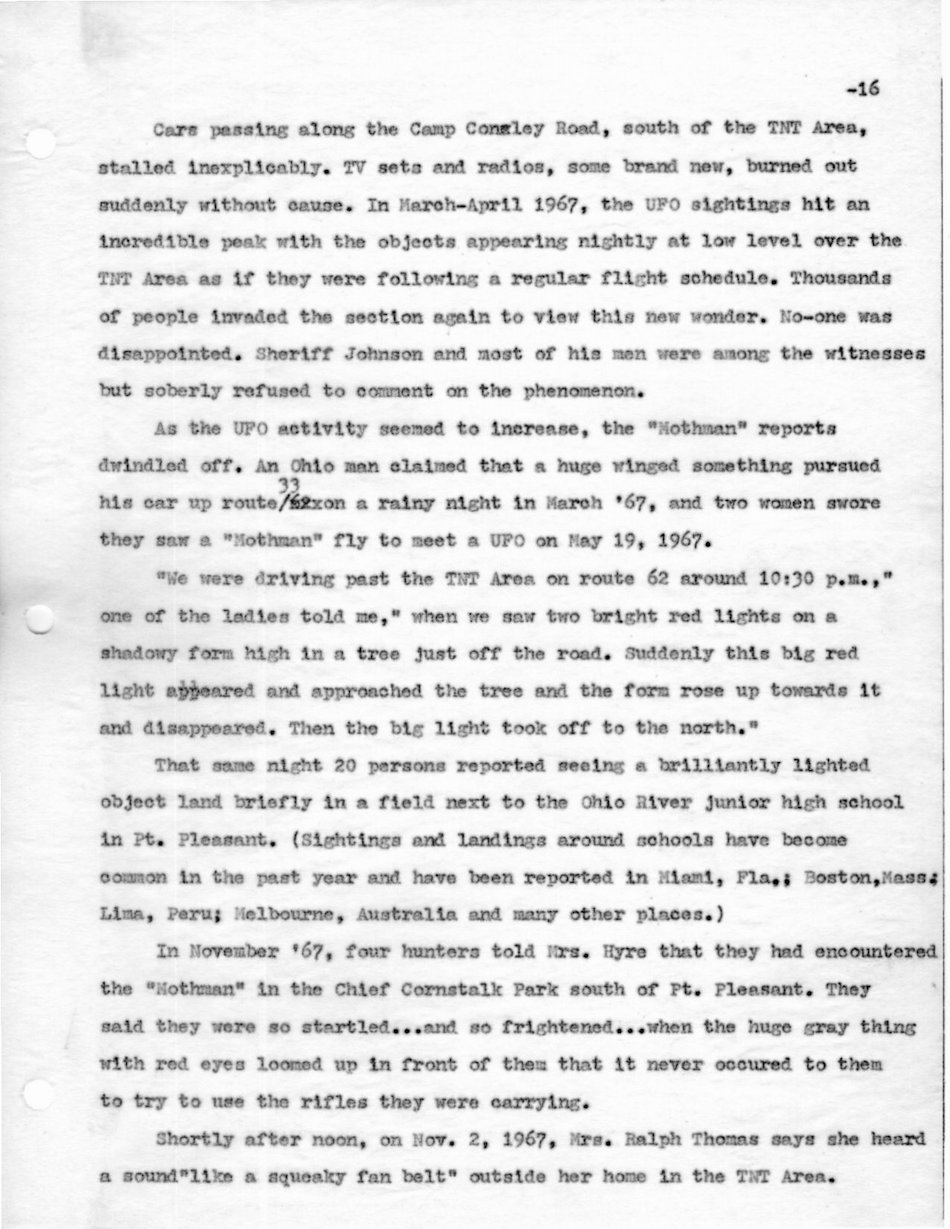
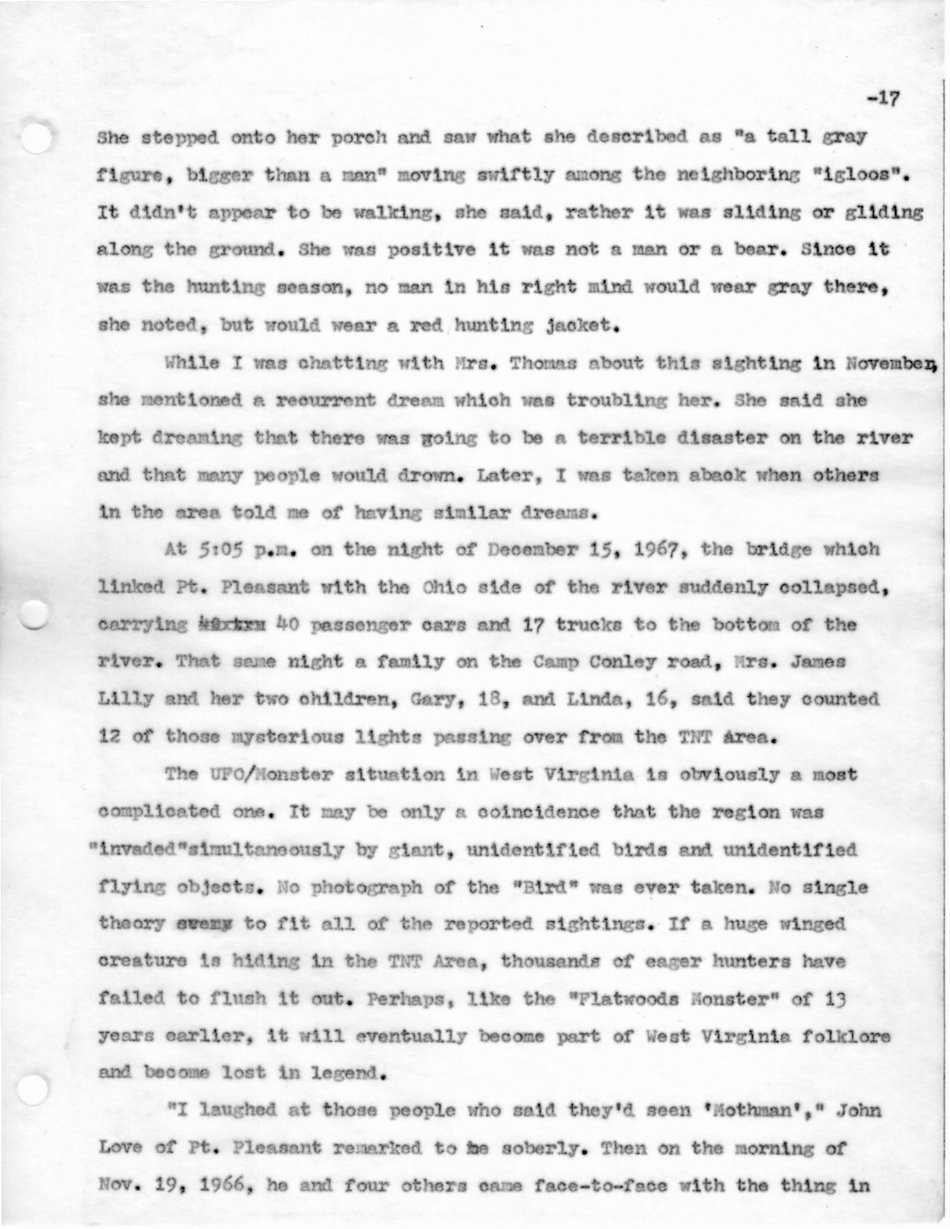
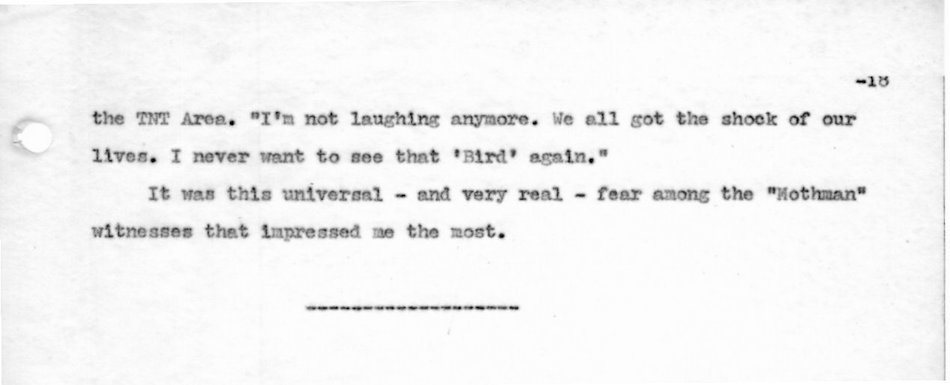
Powered by WordPress